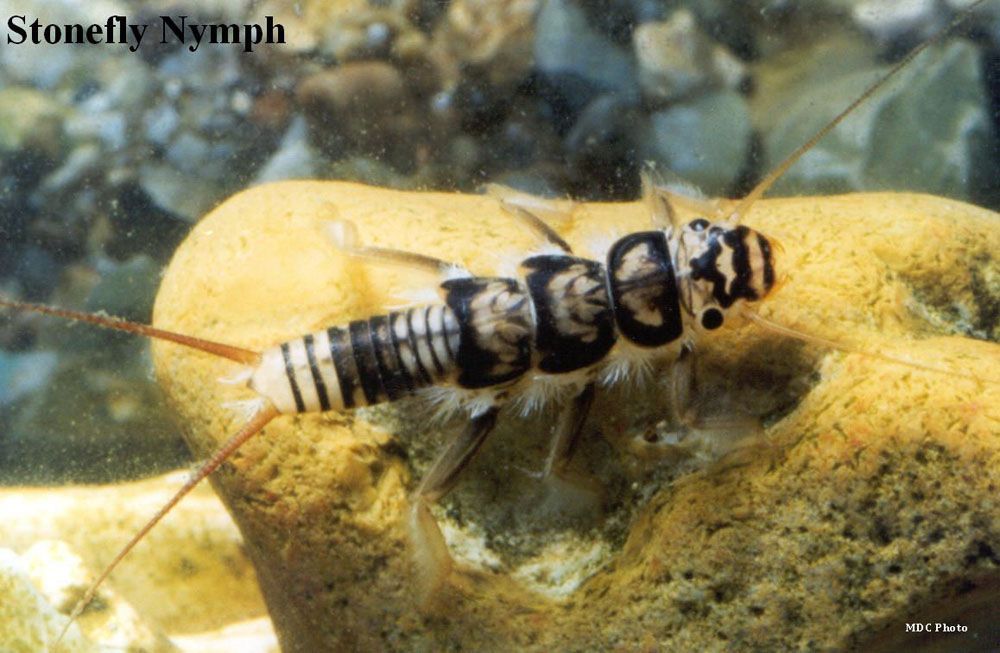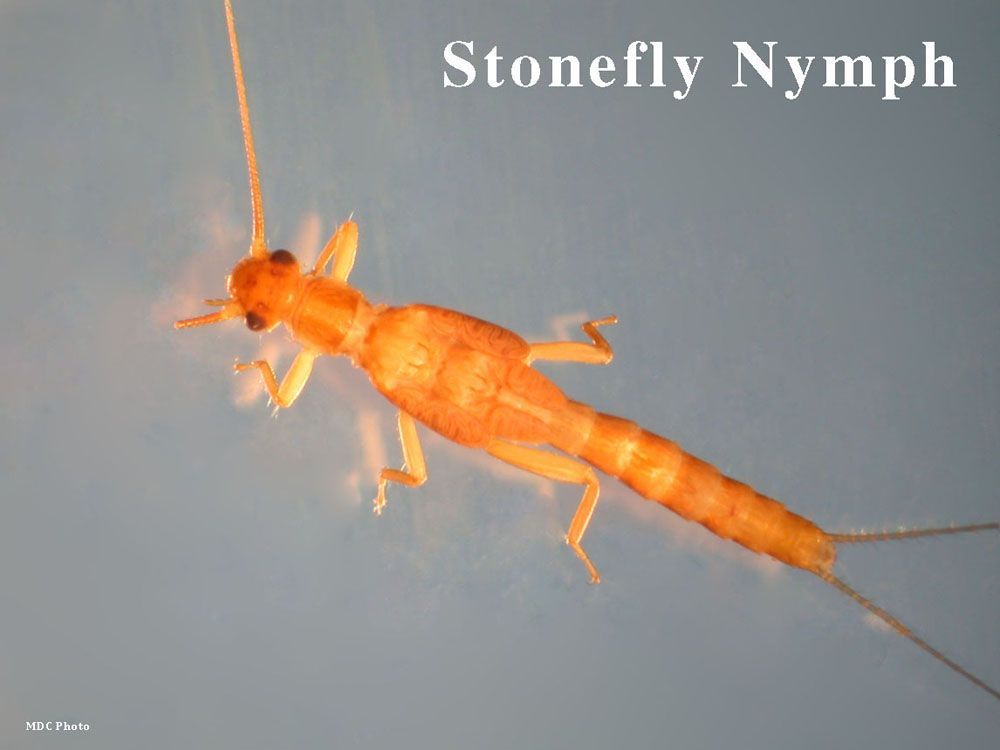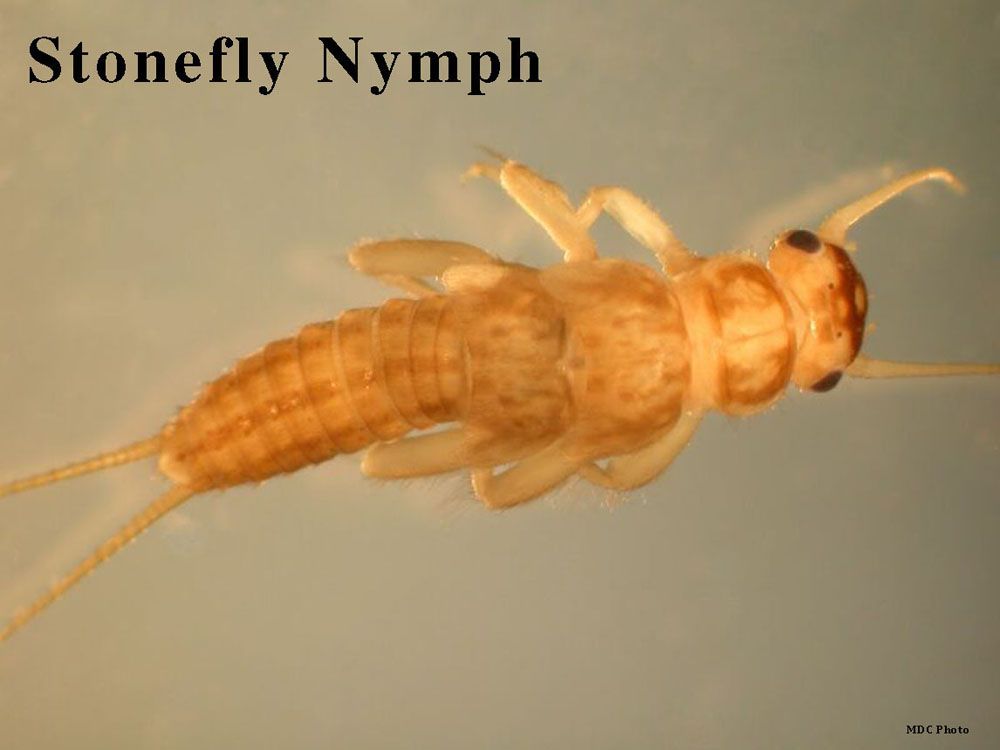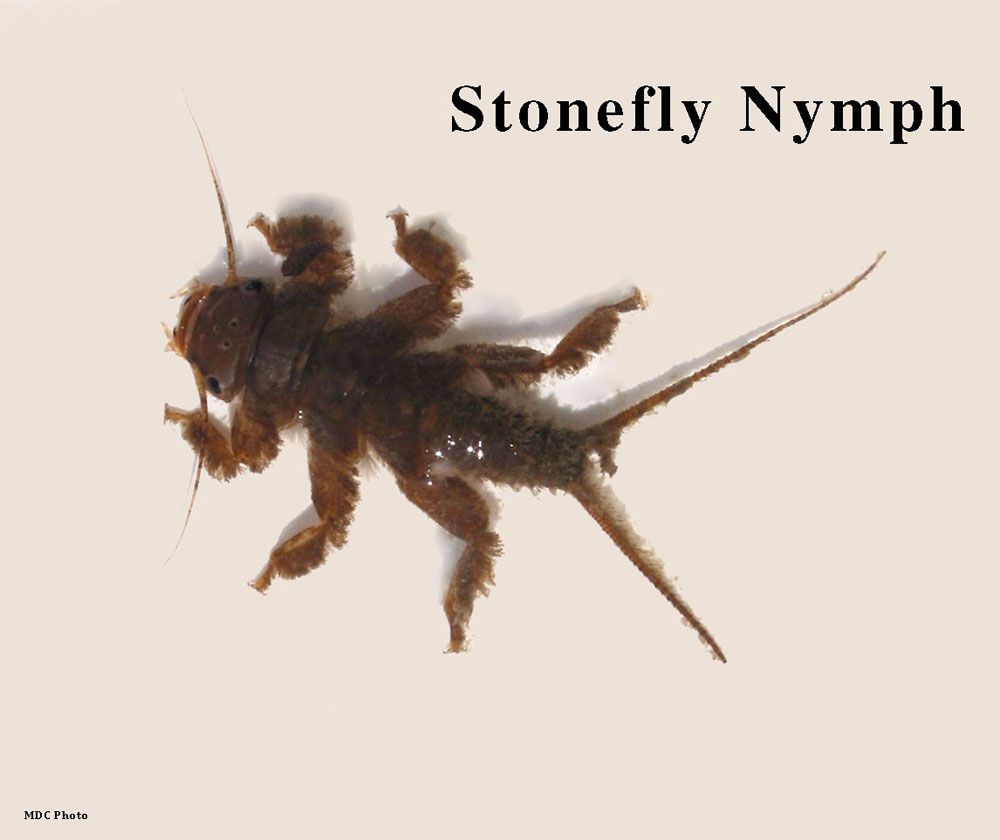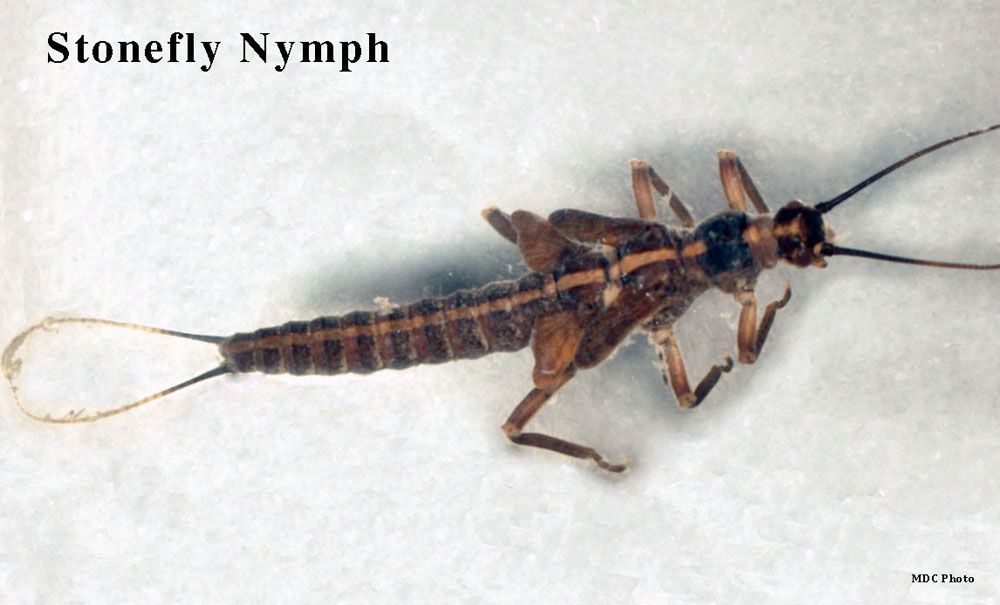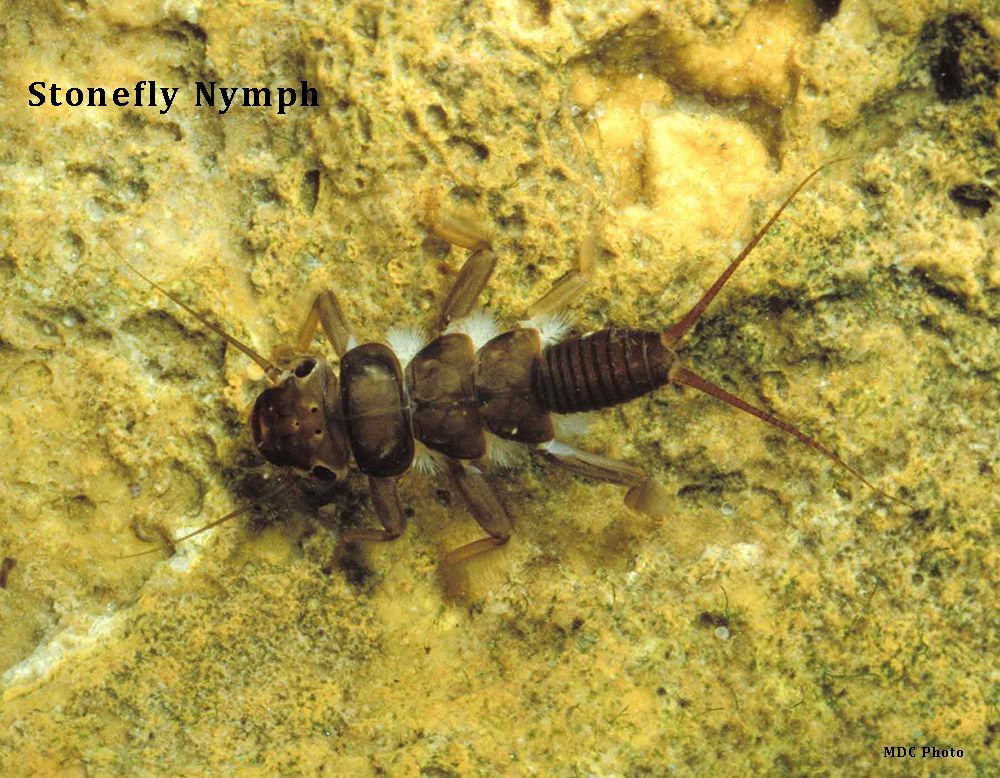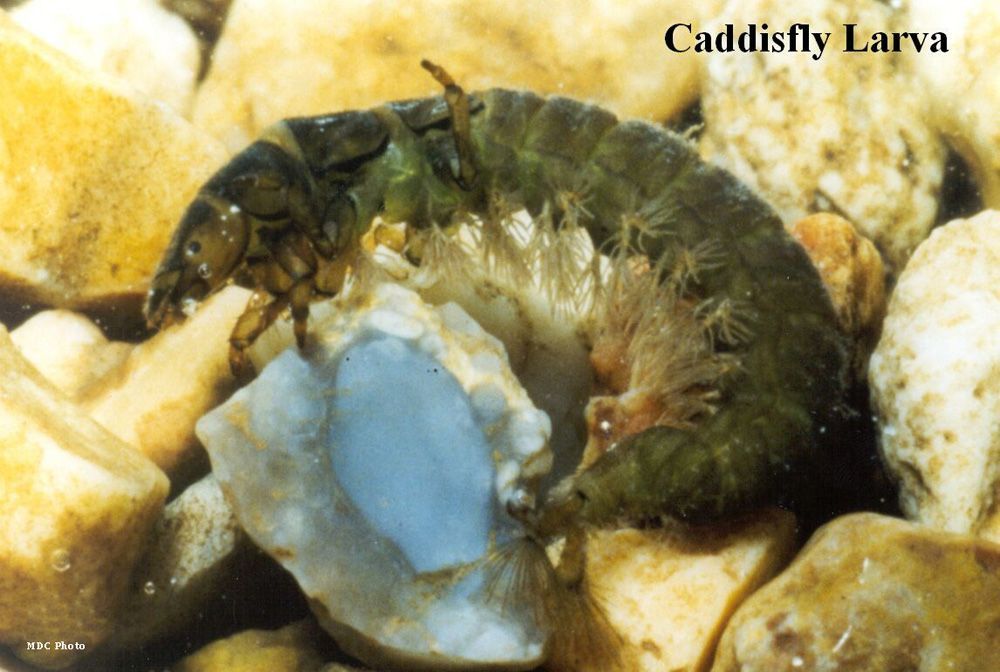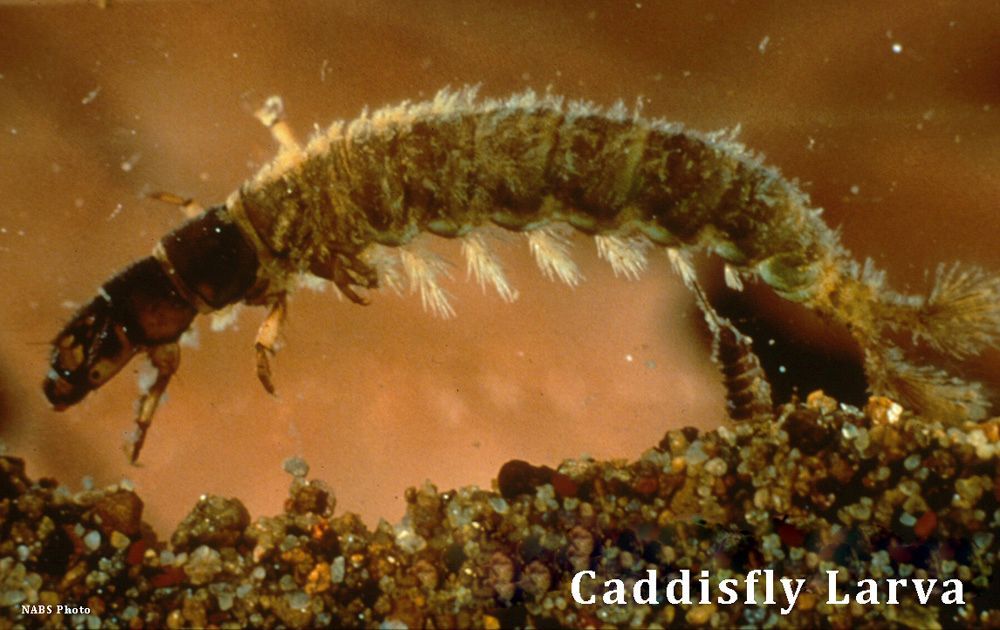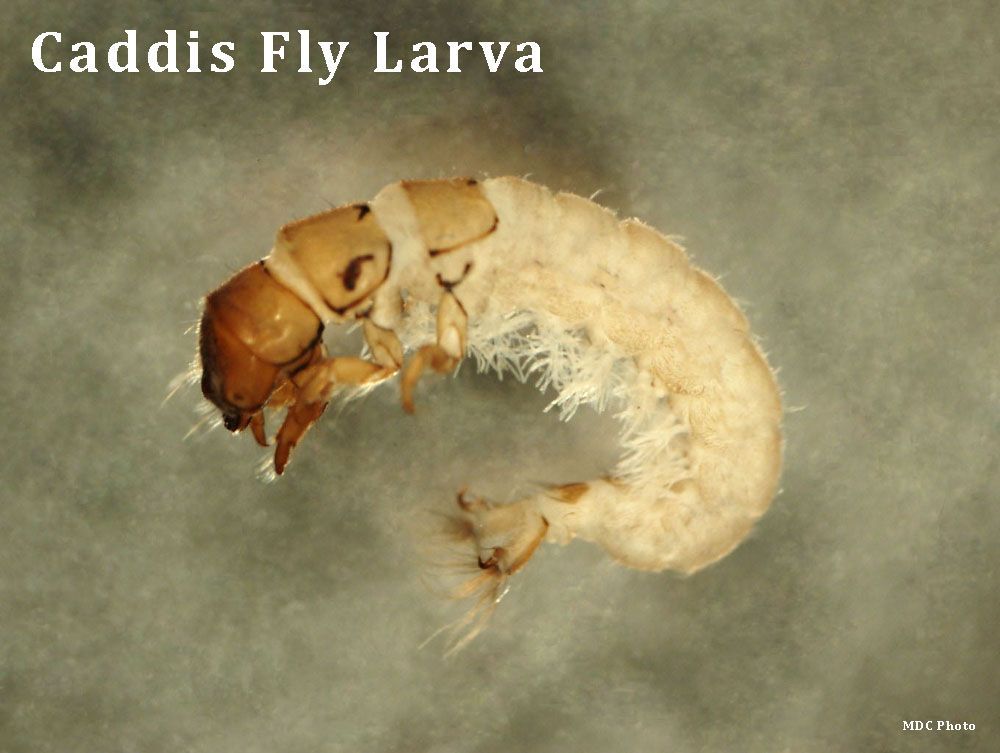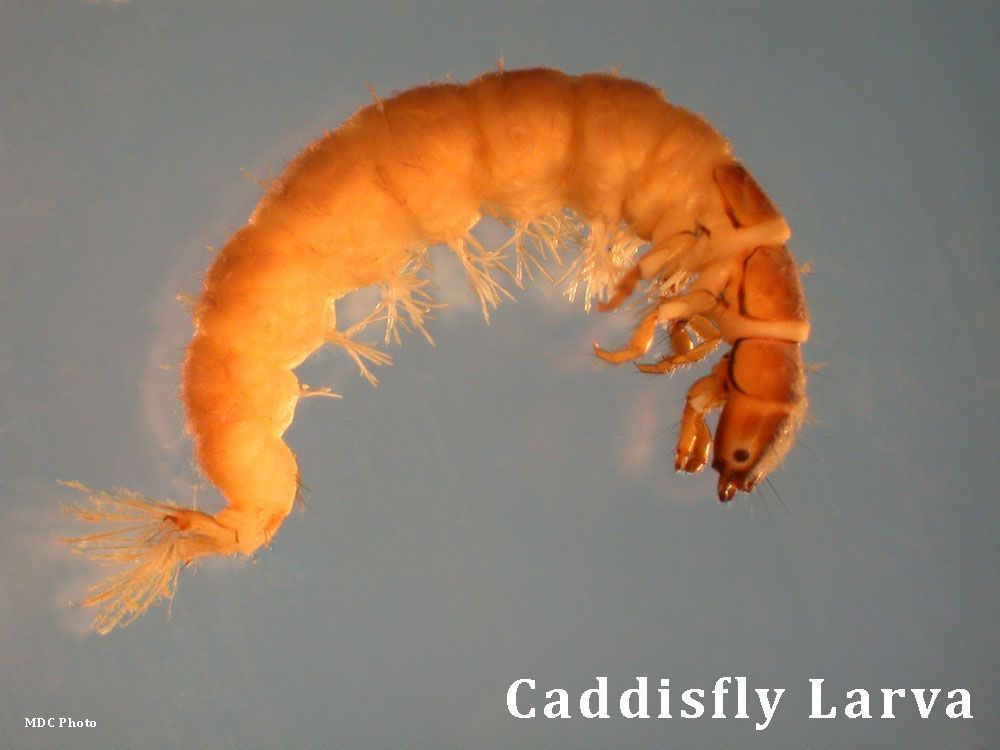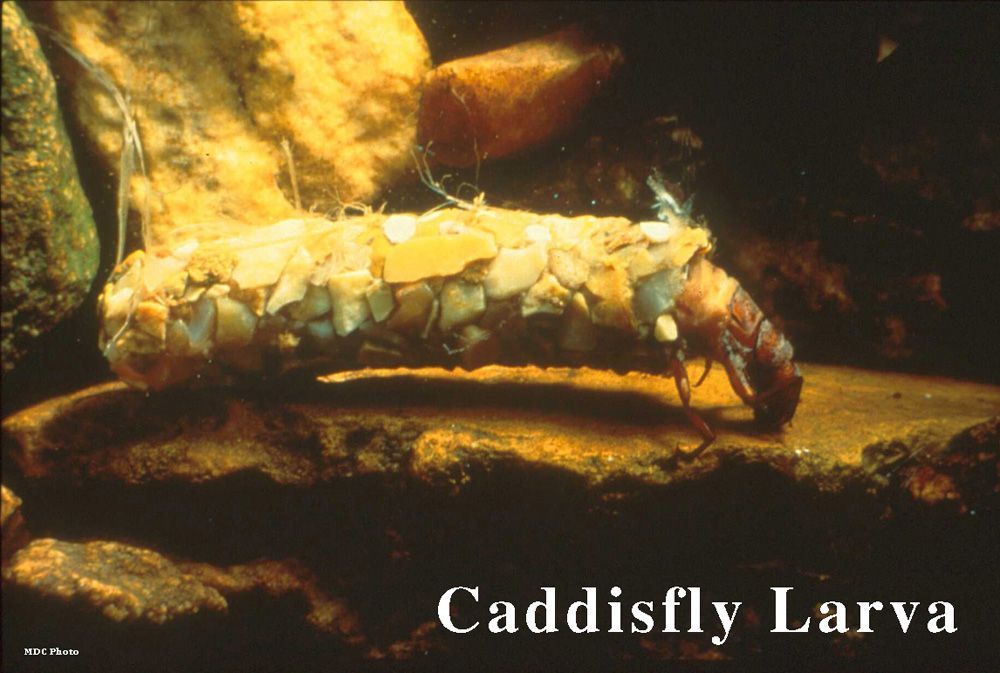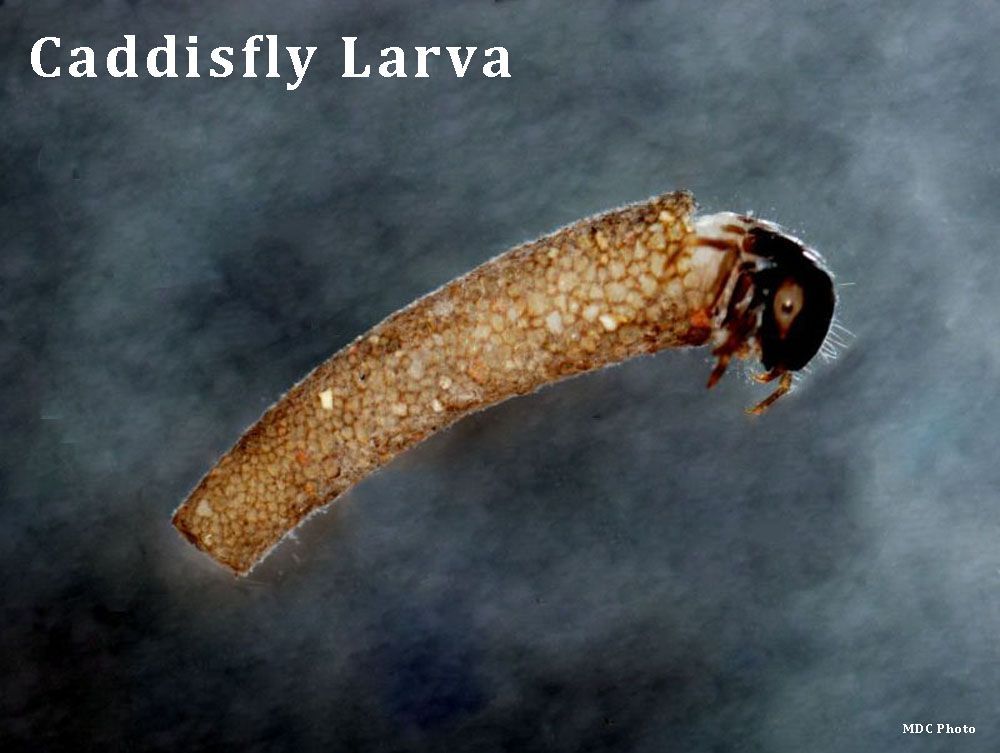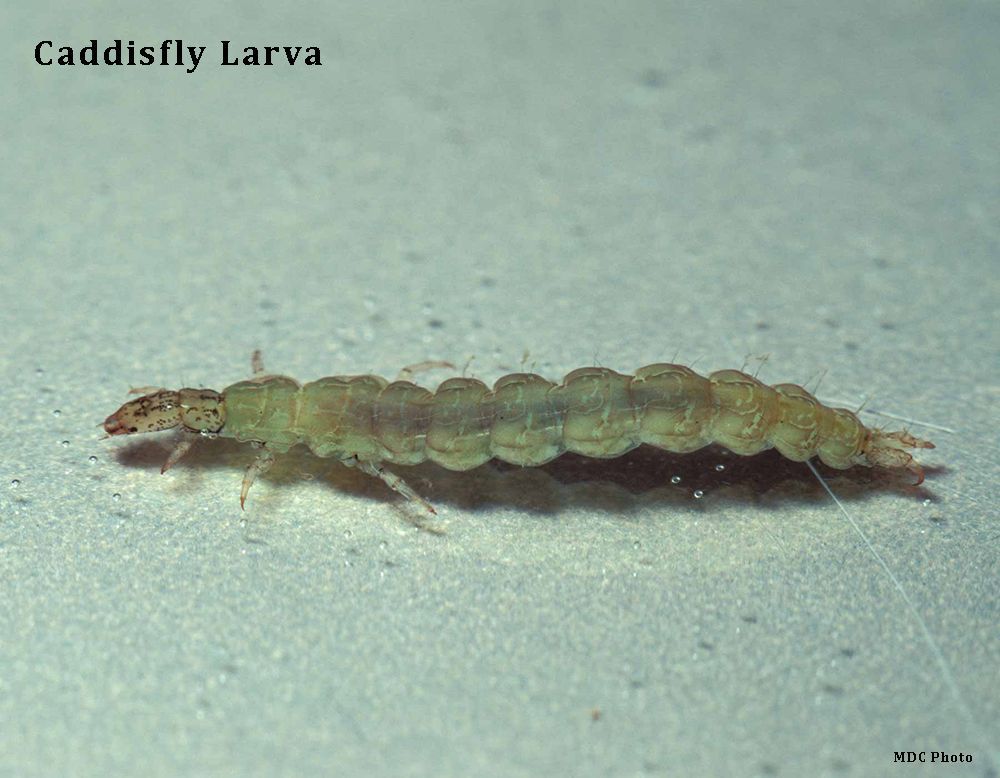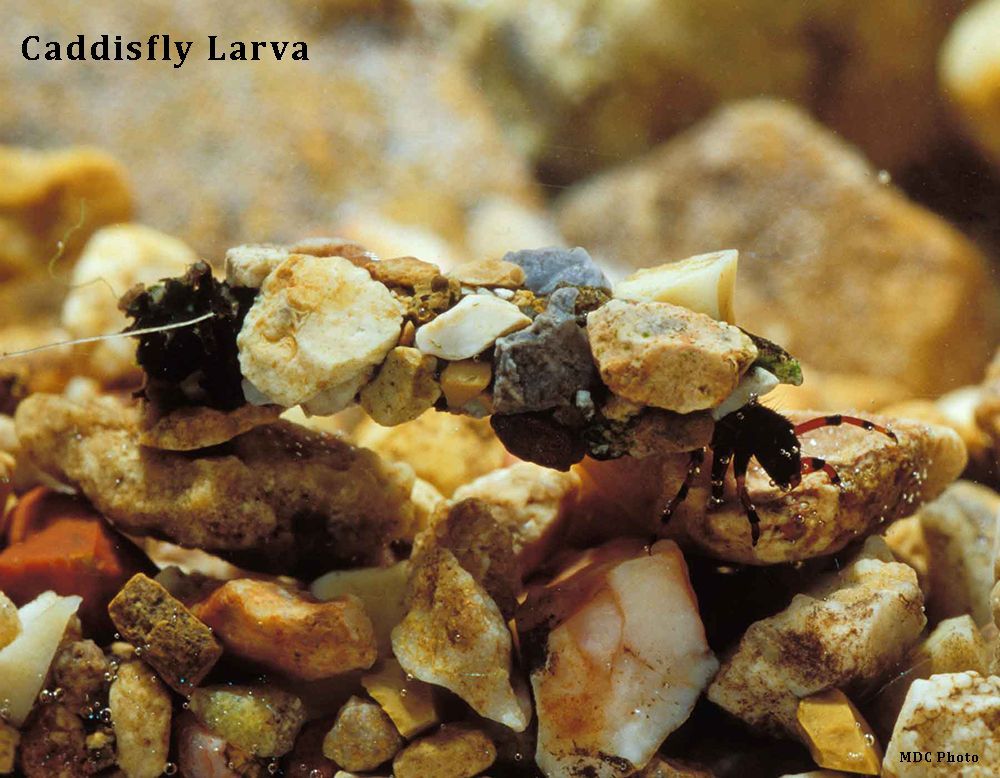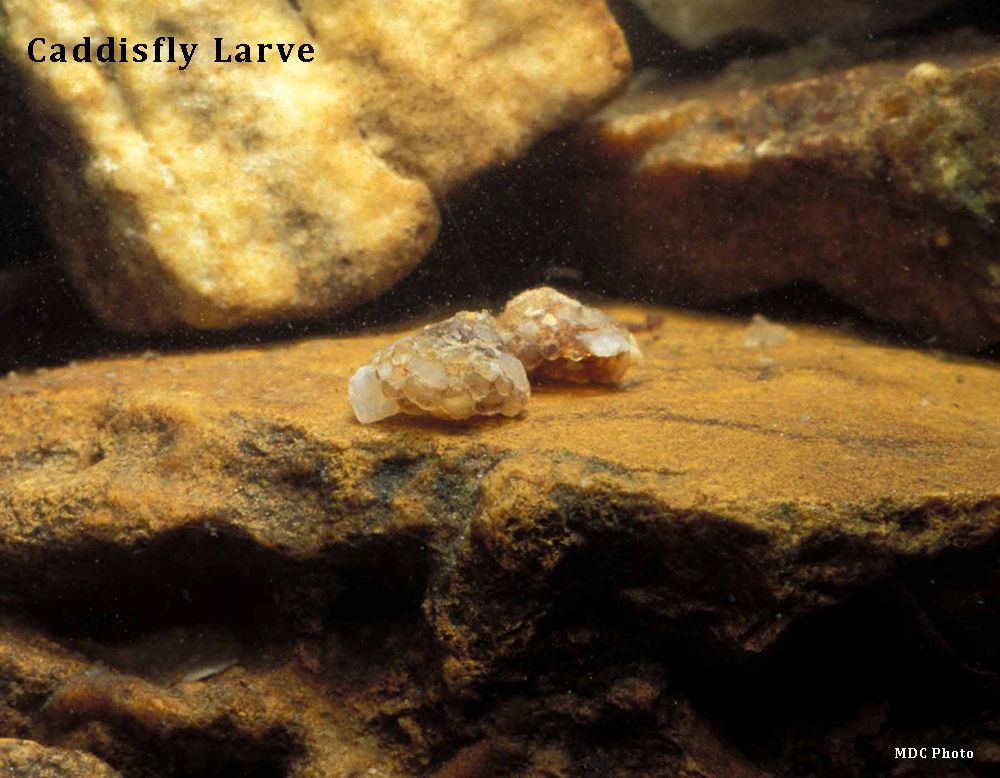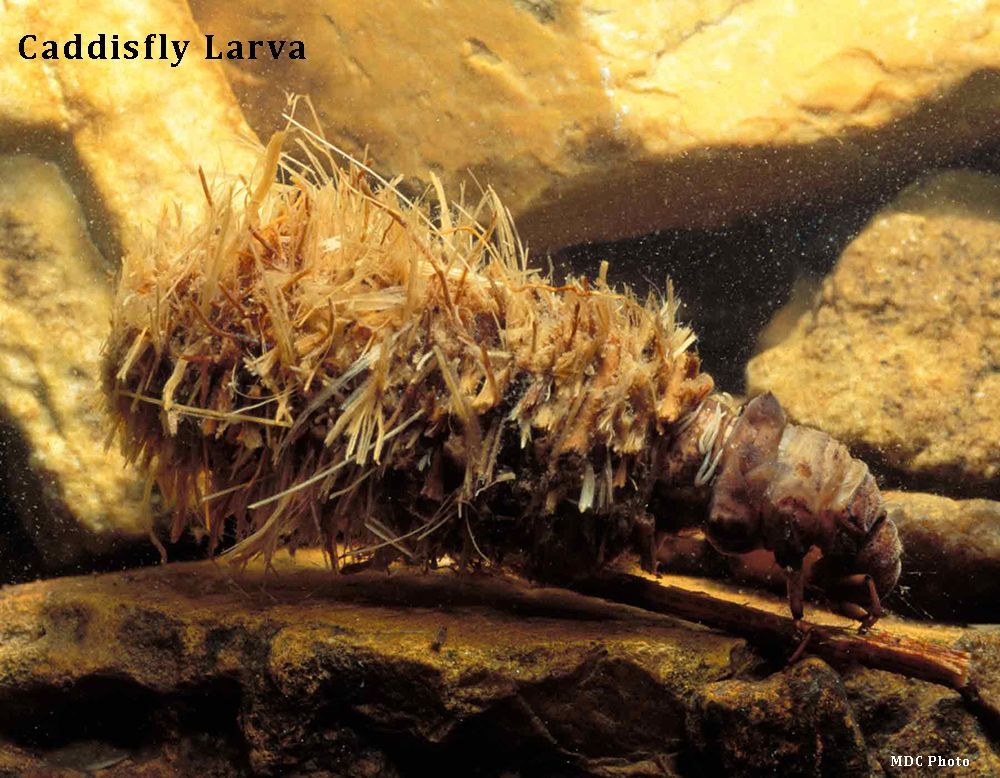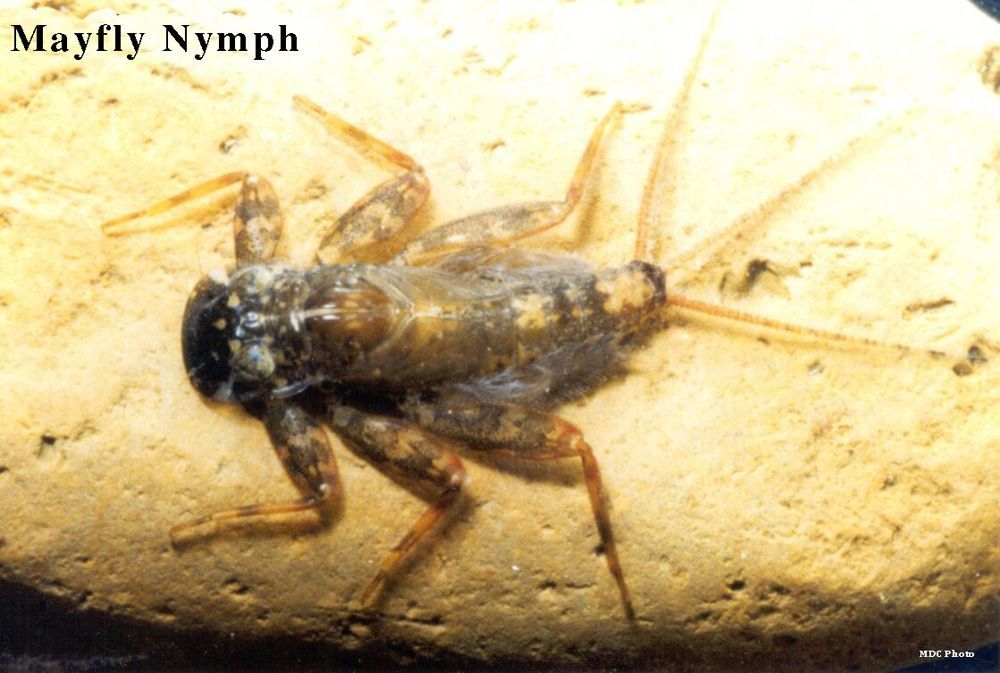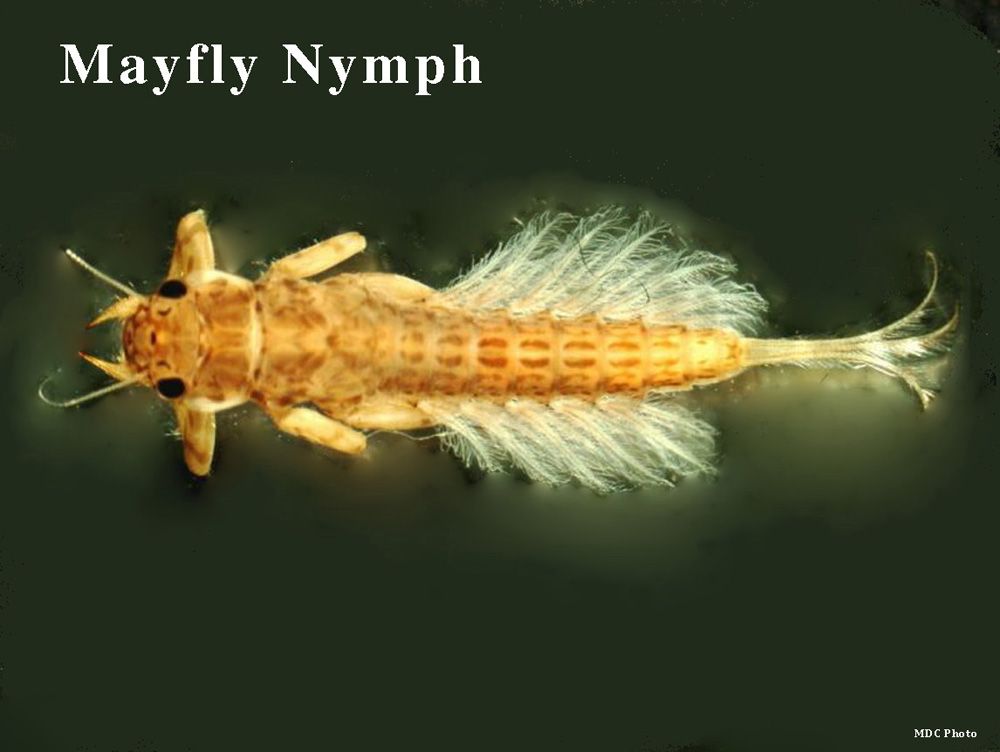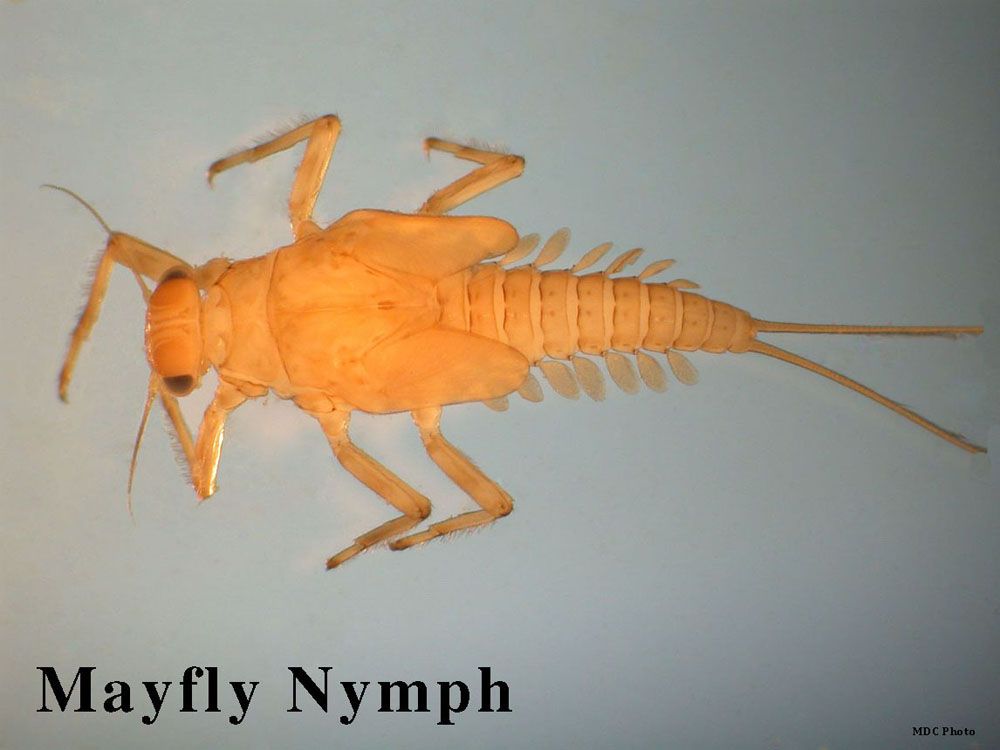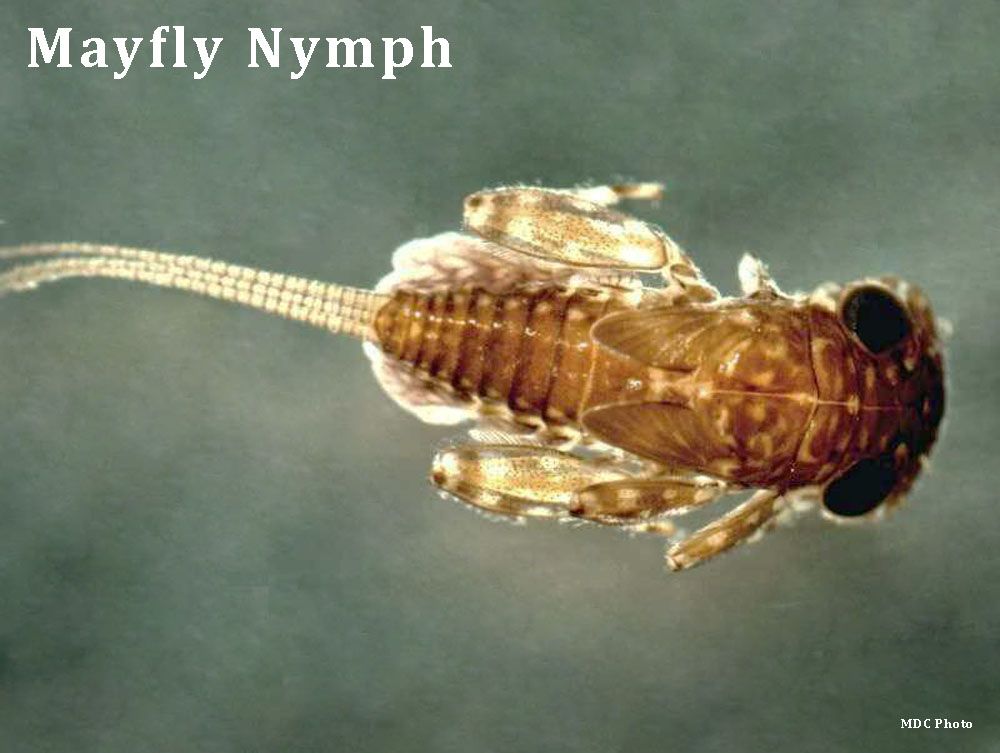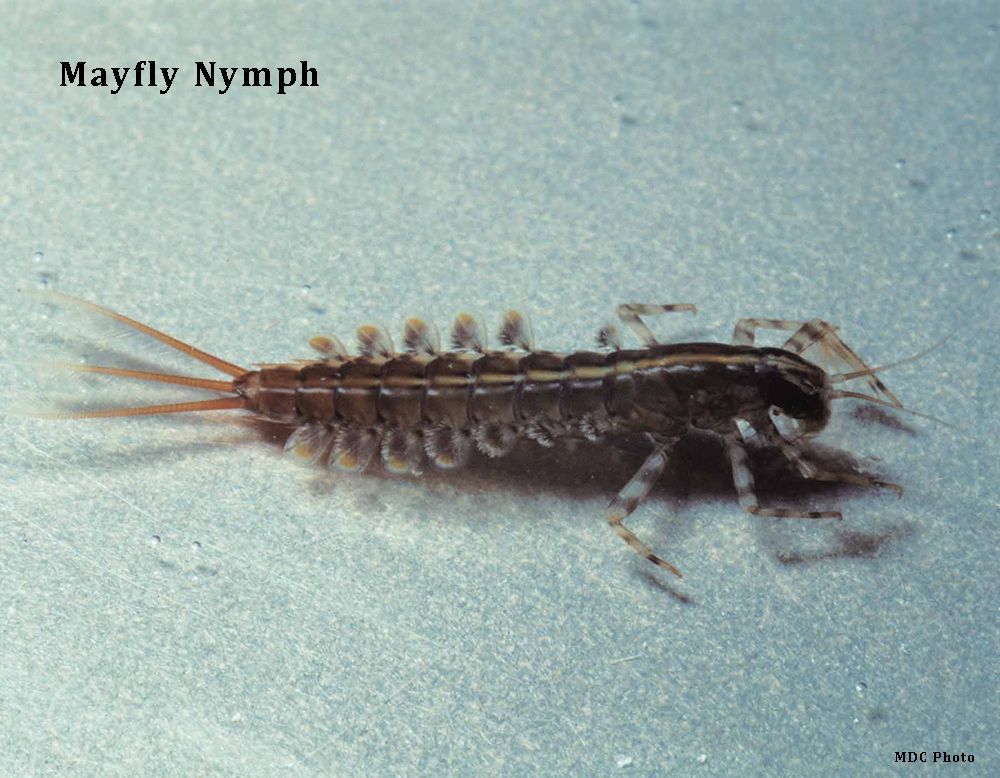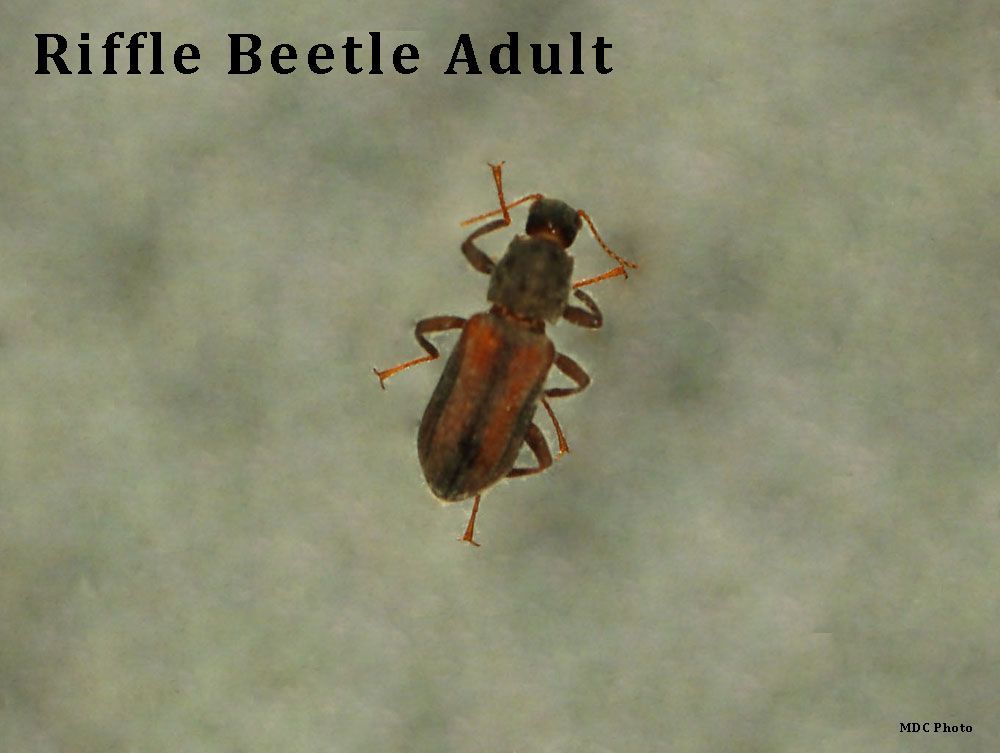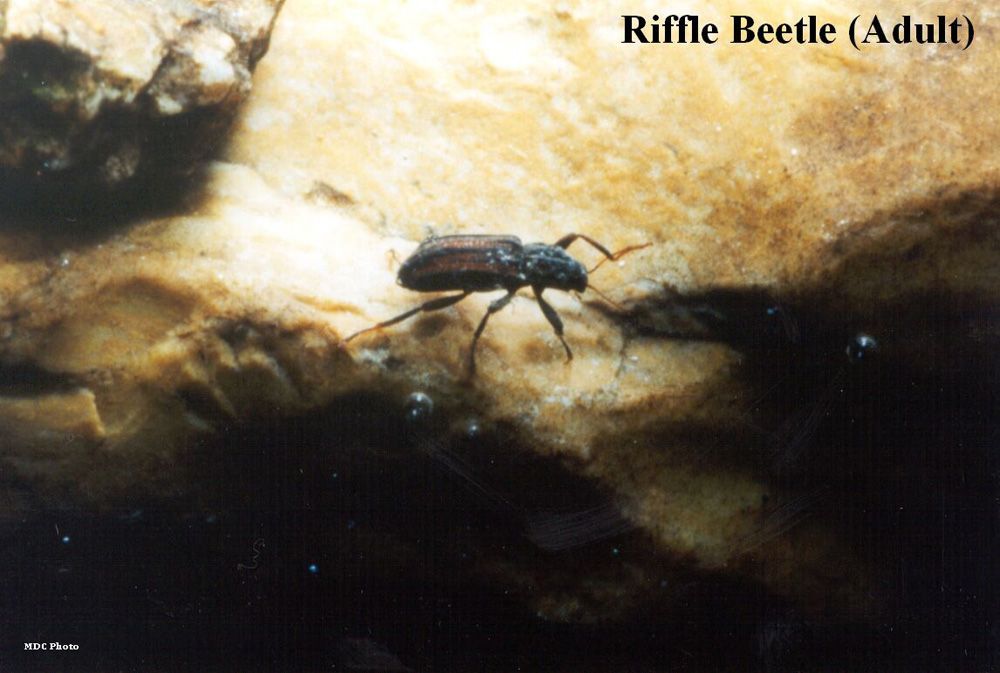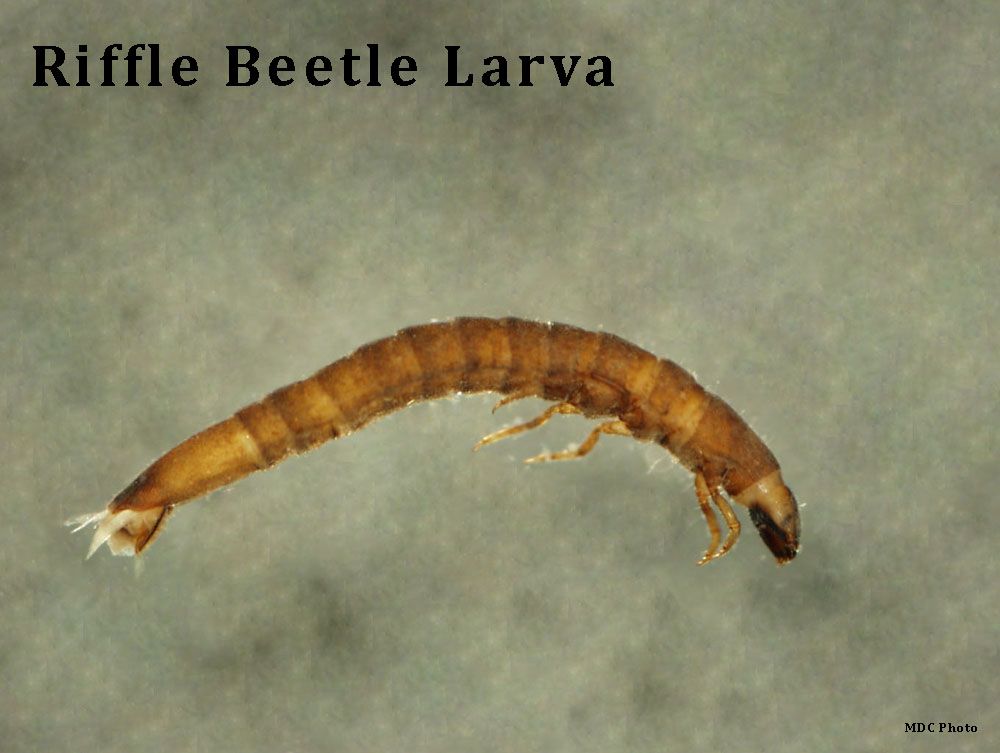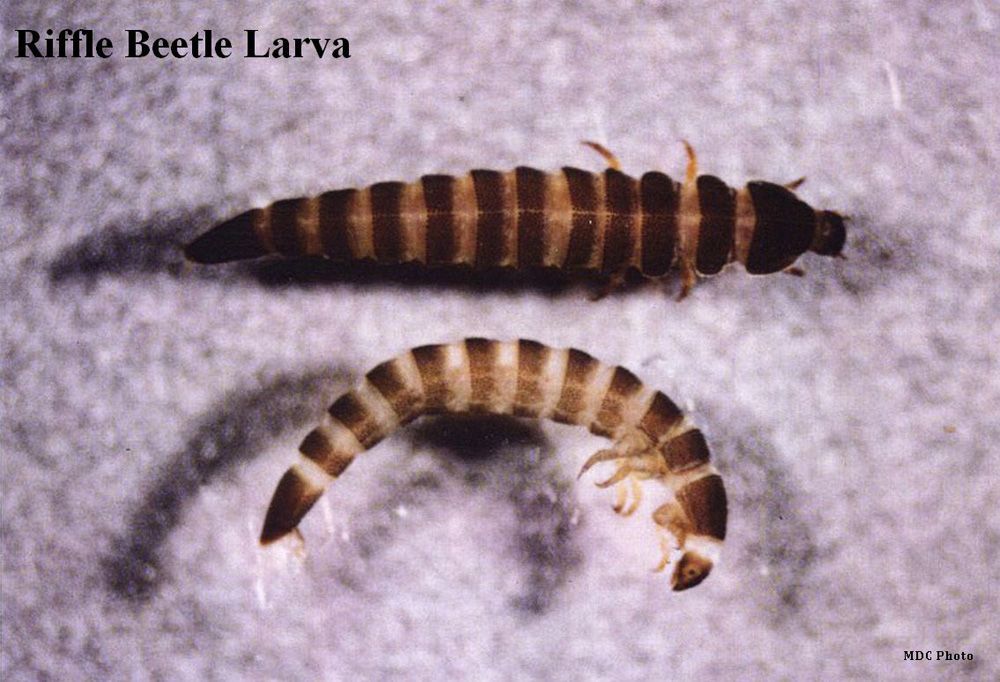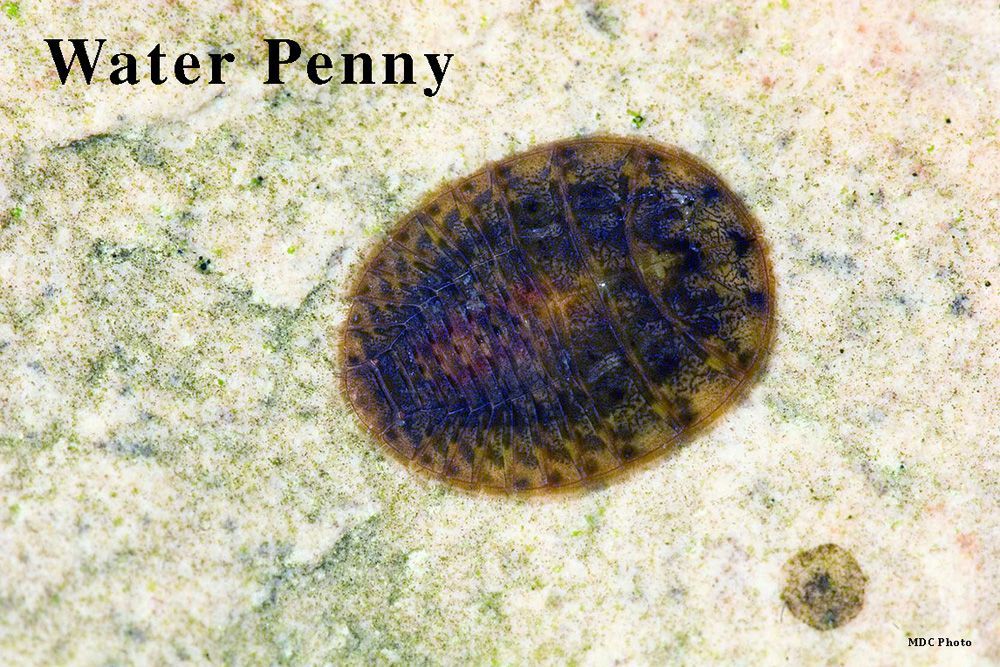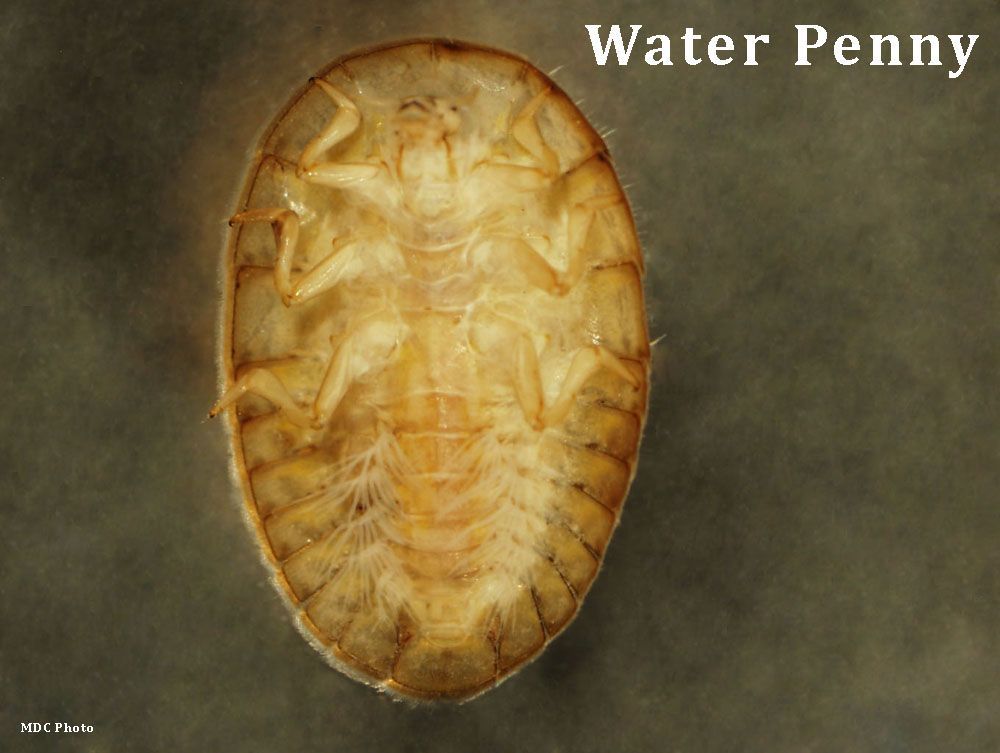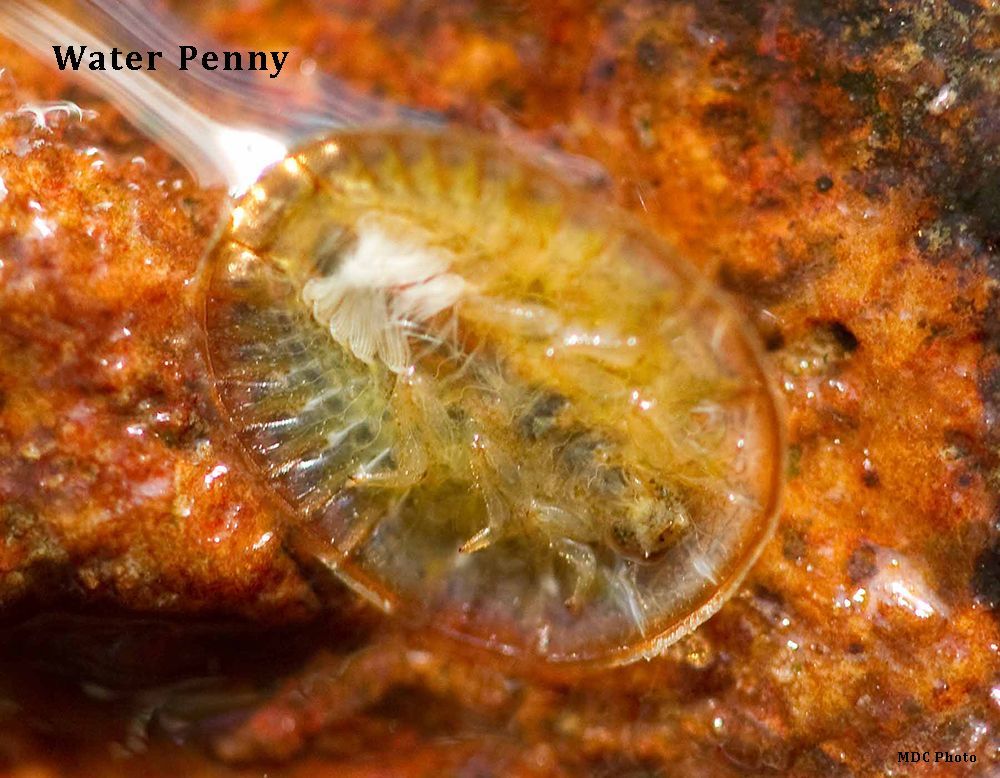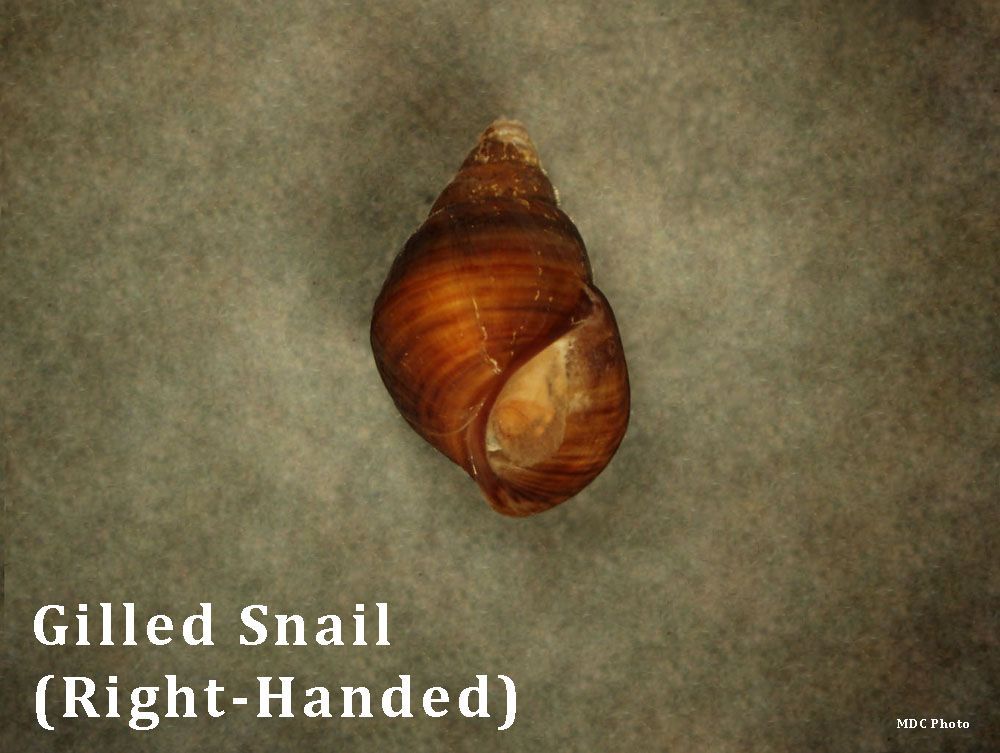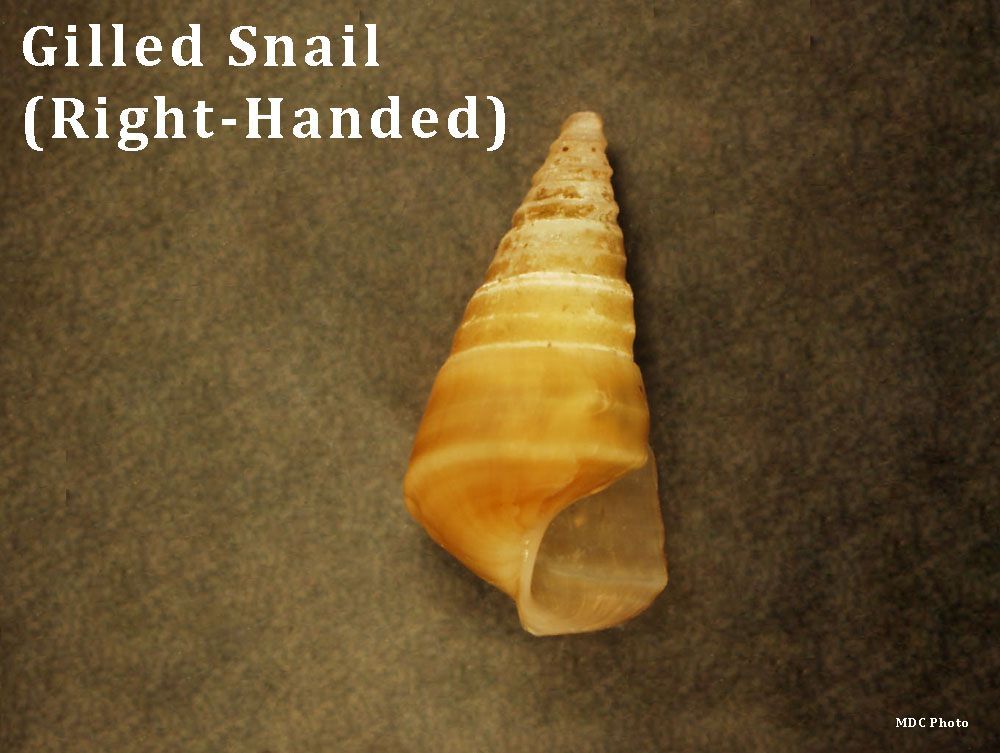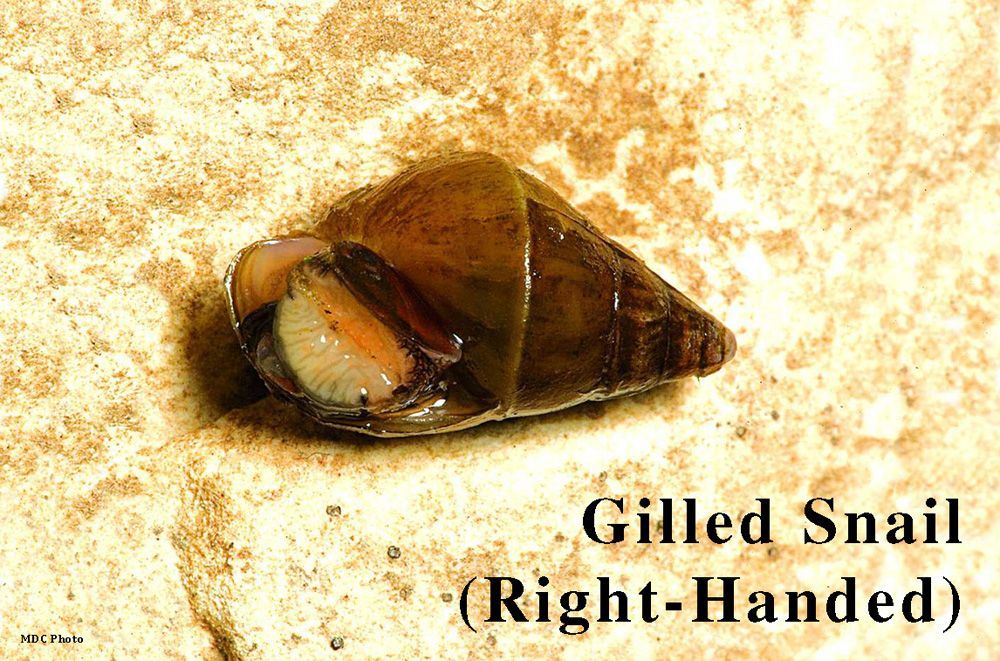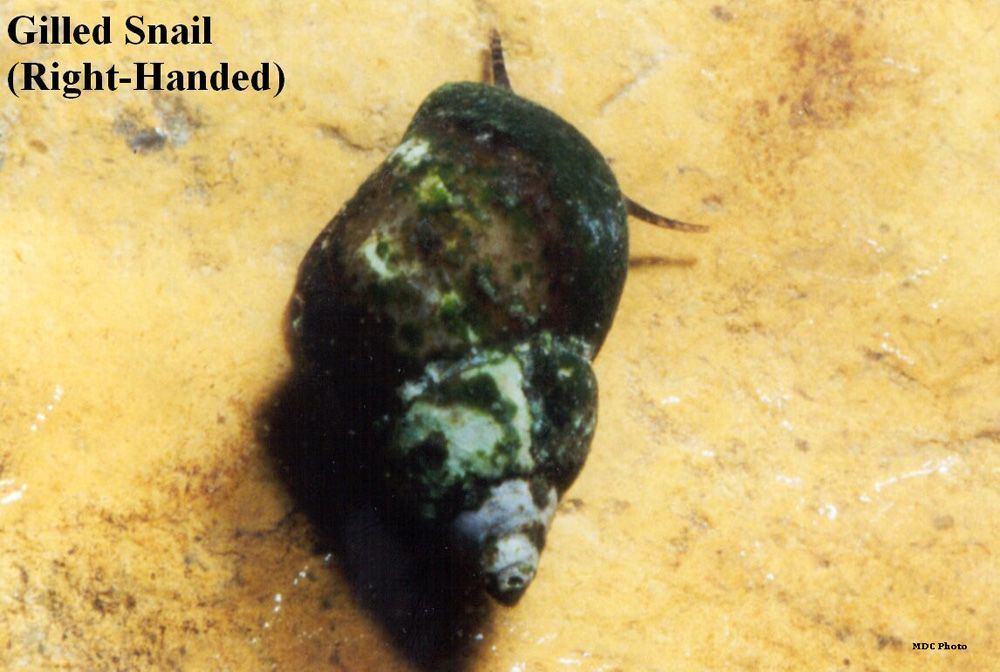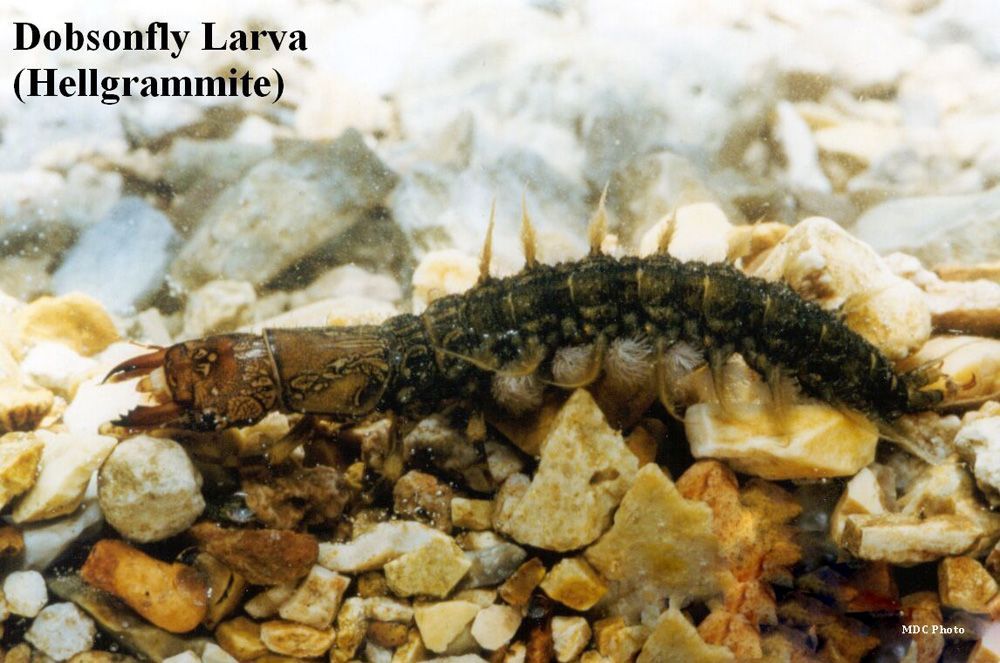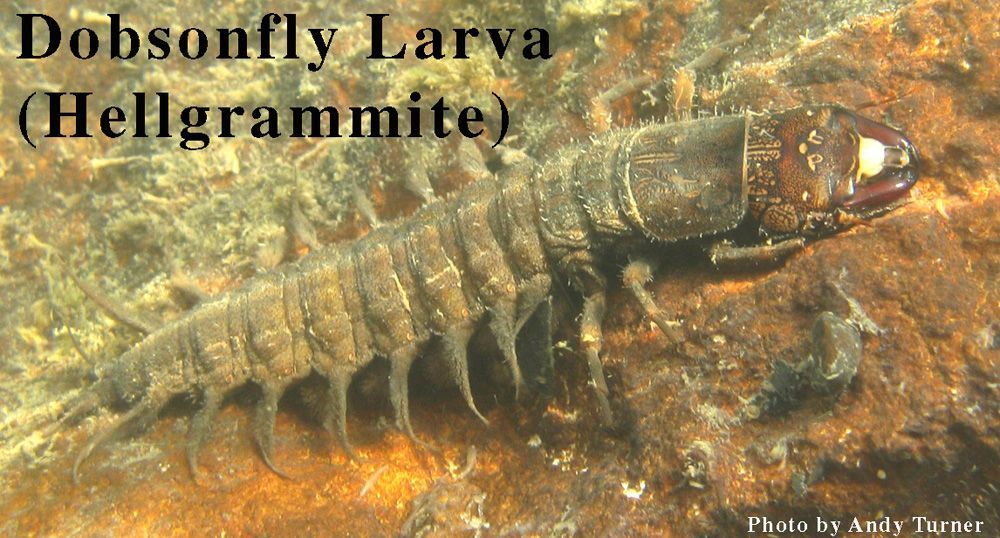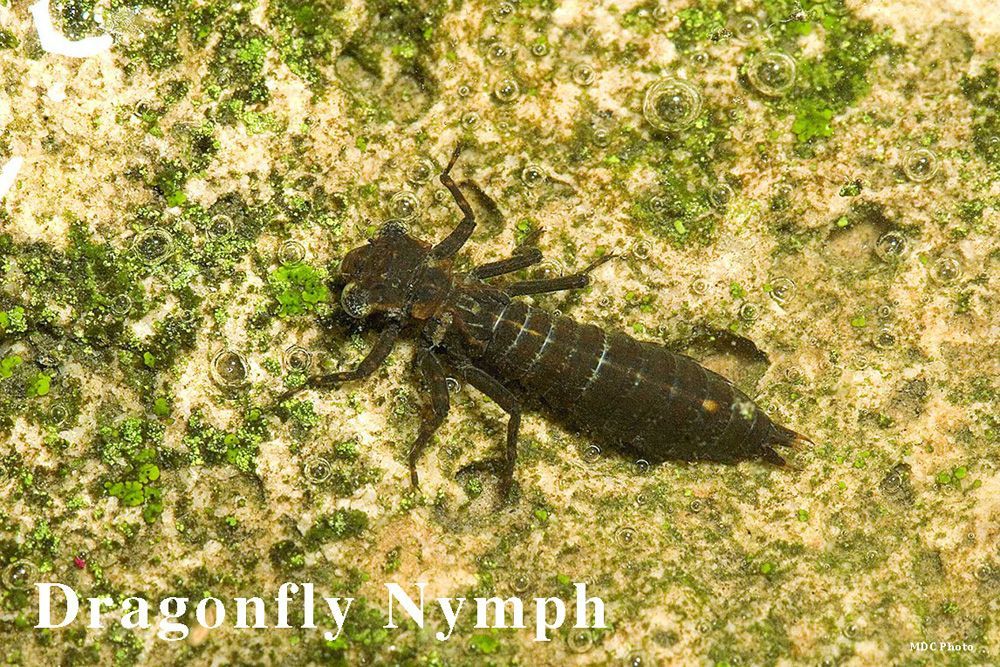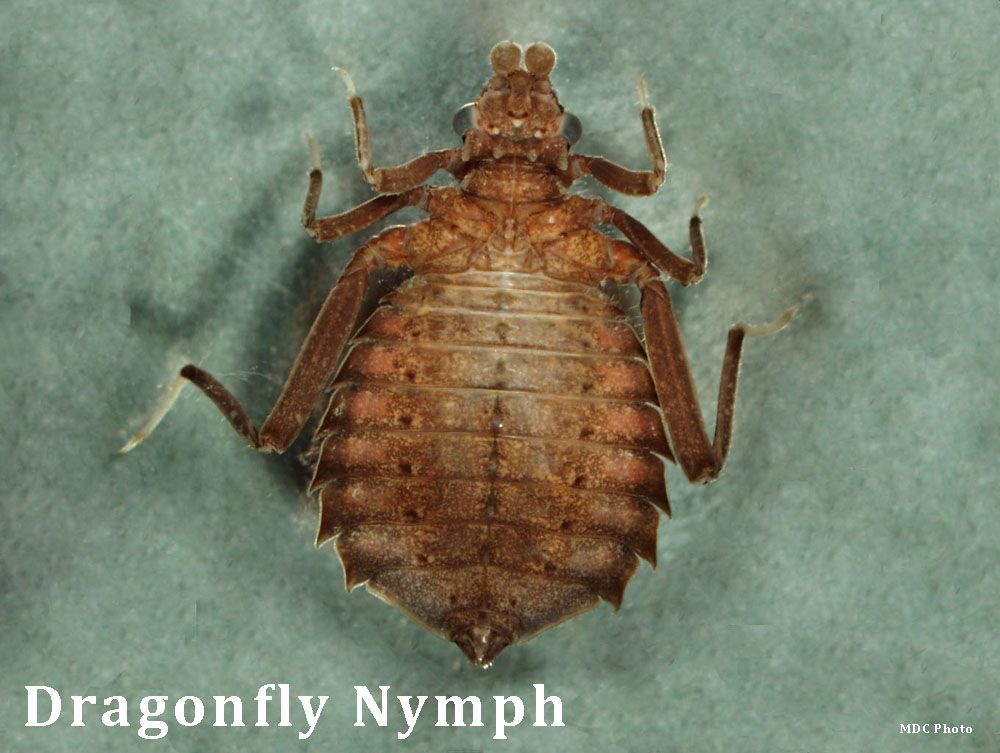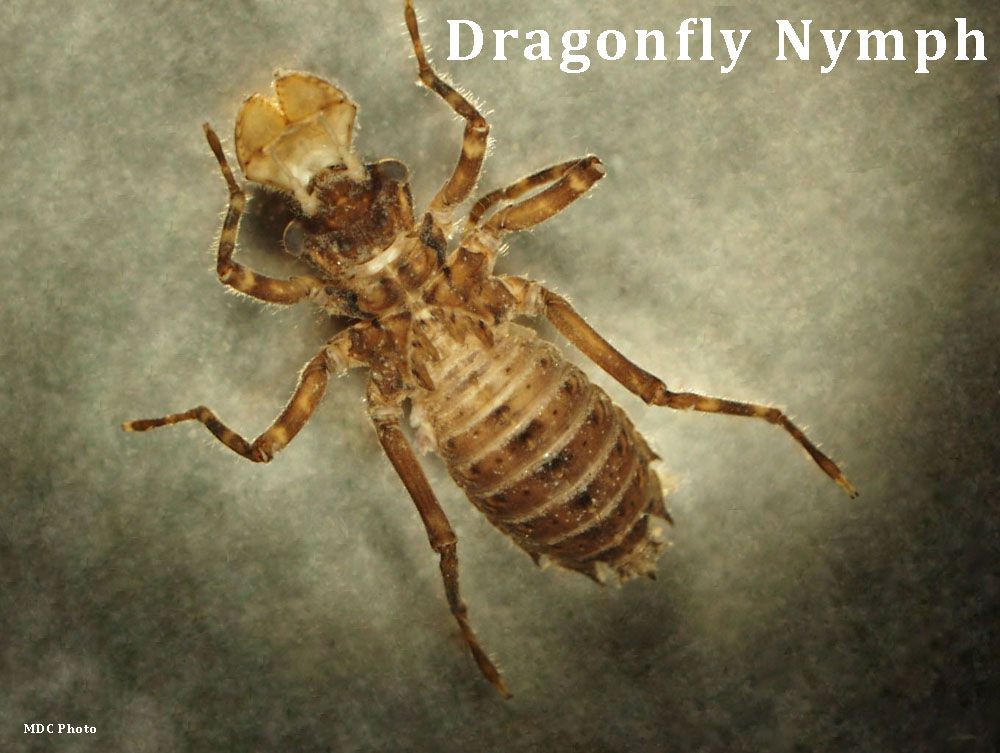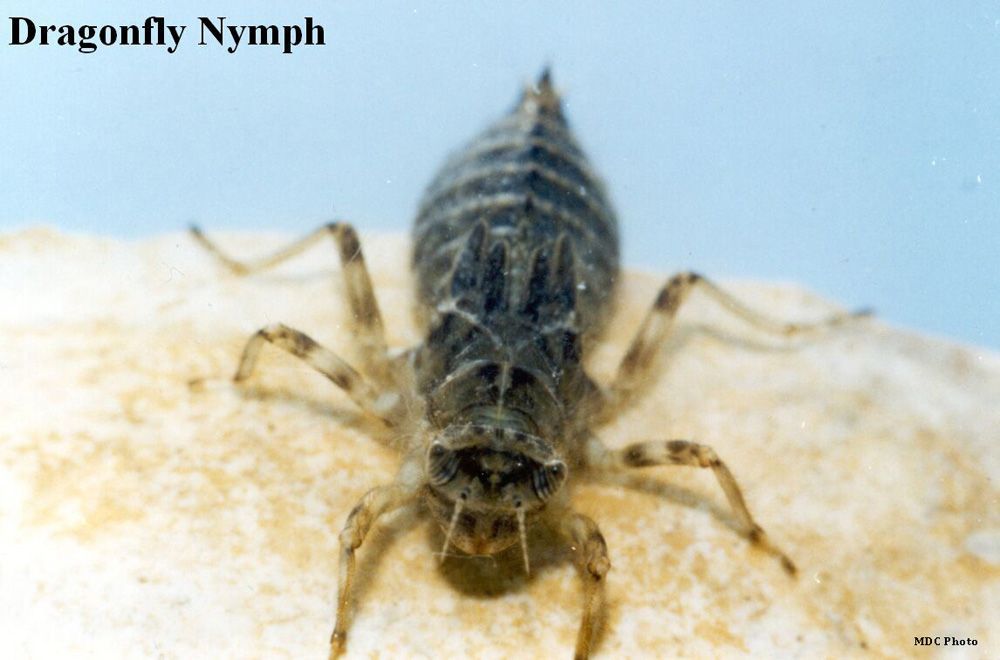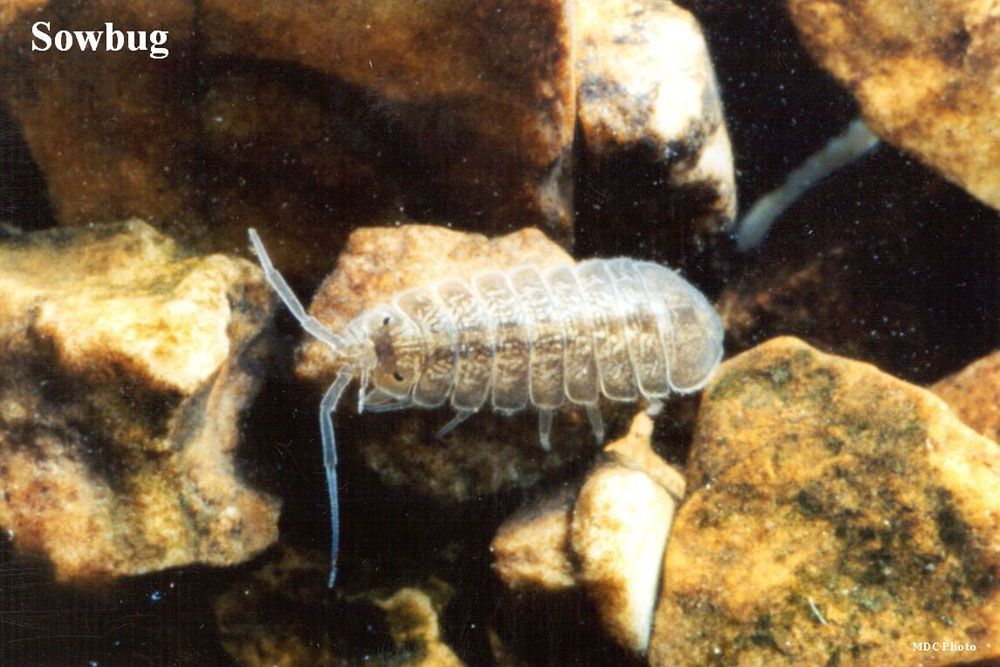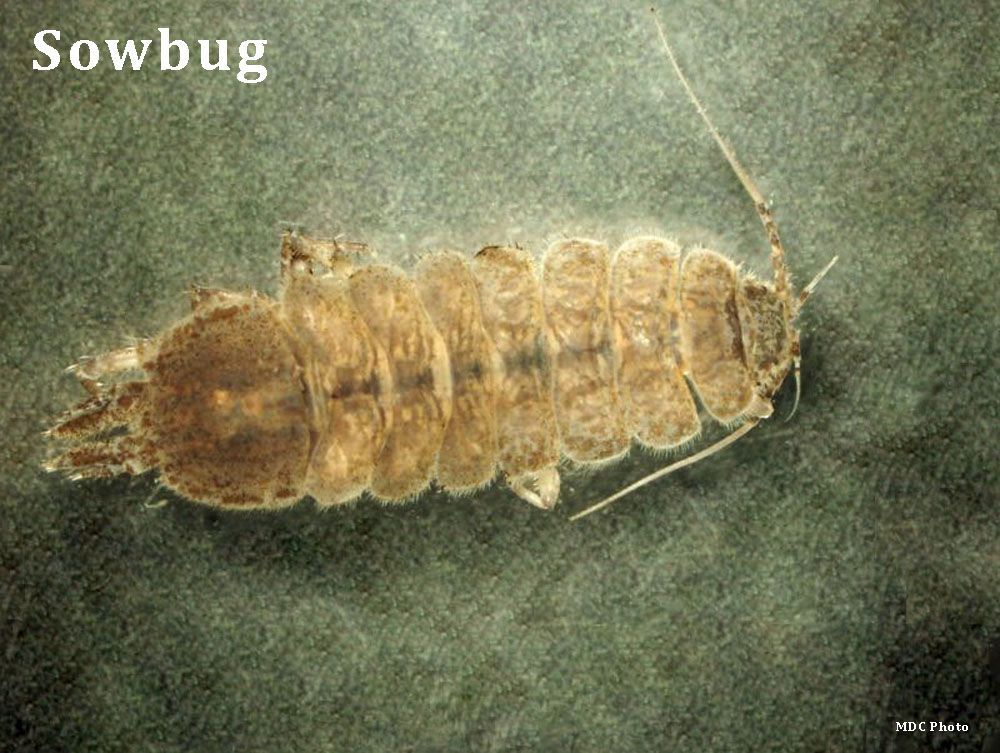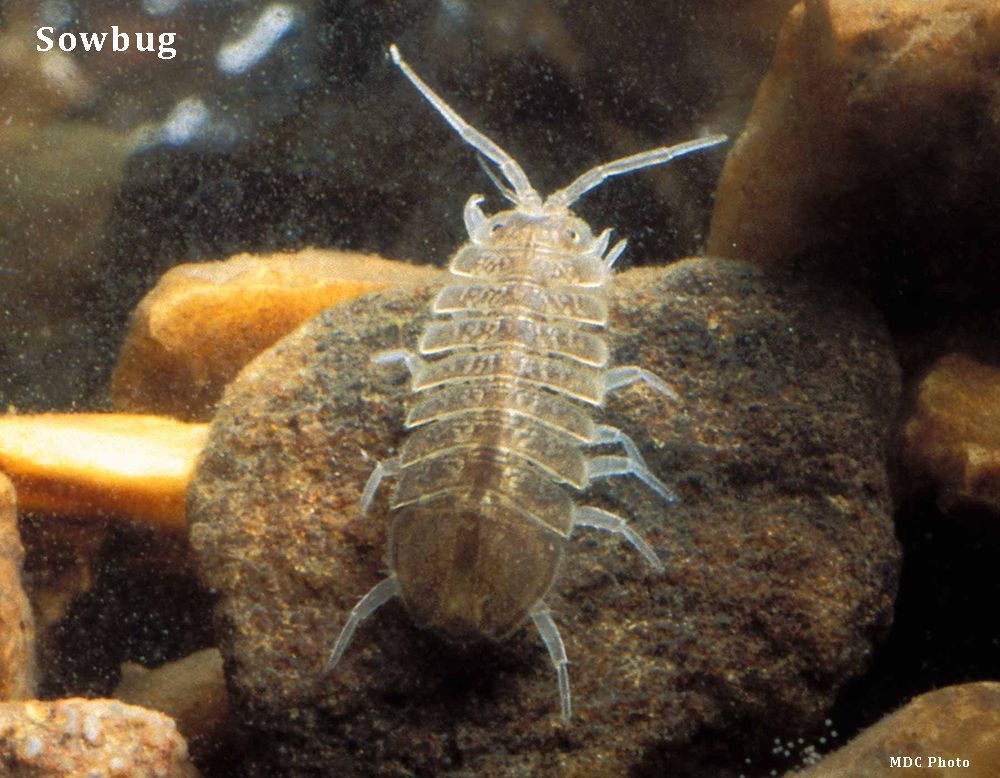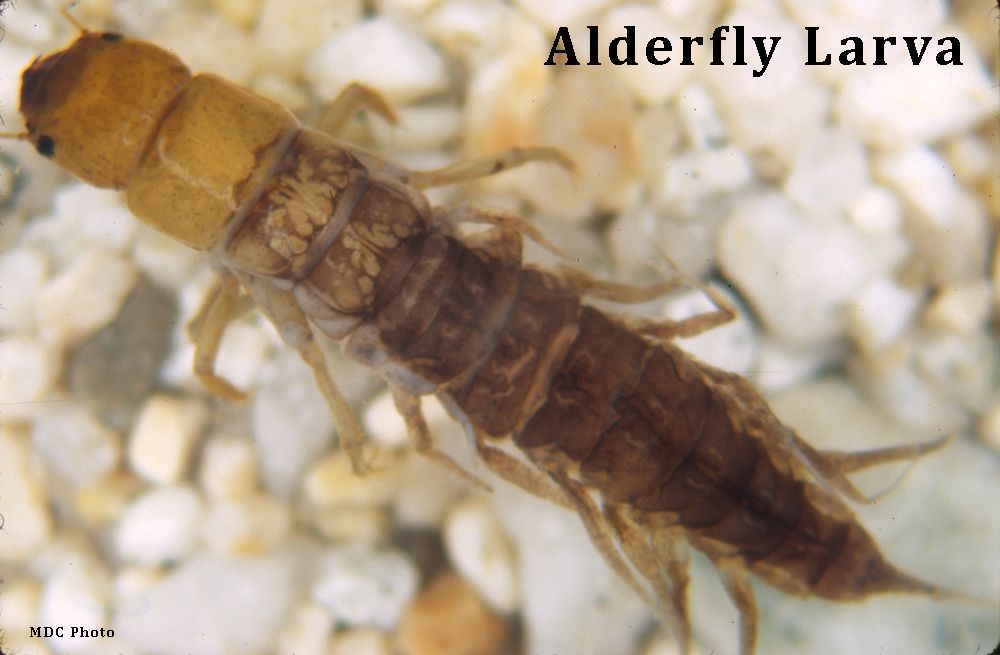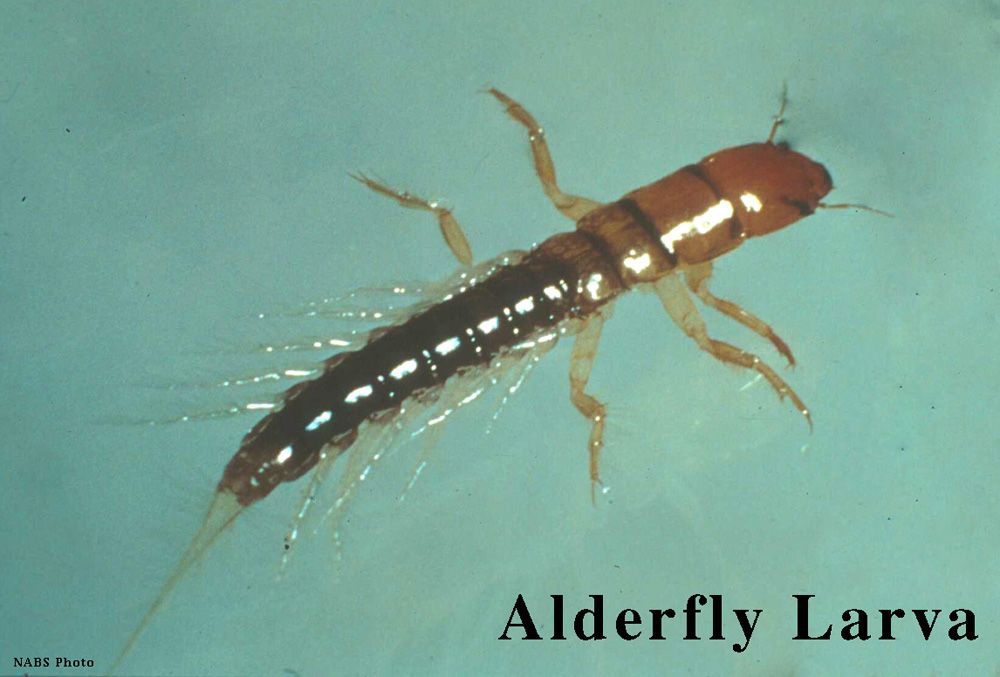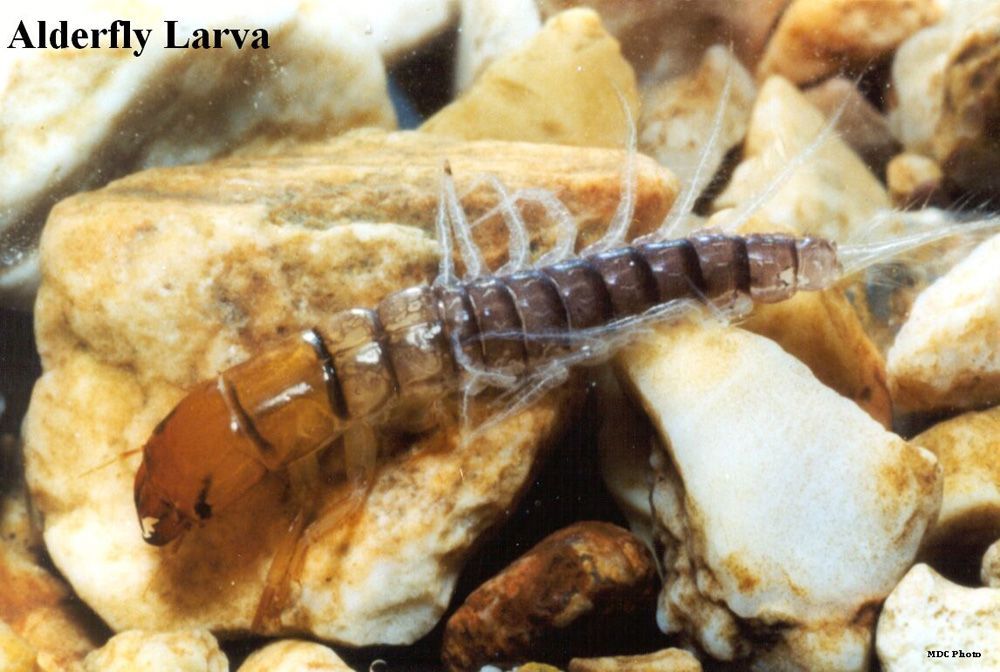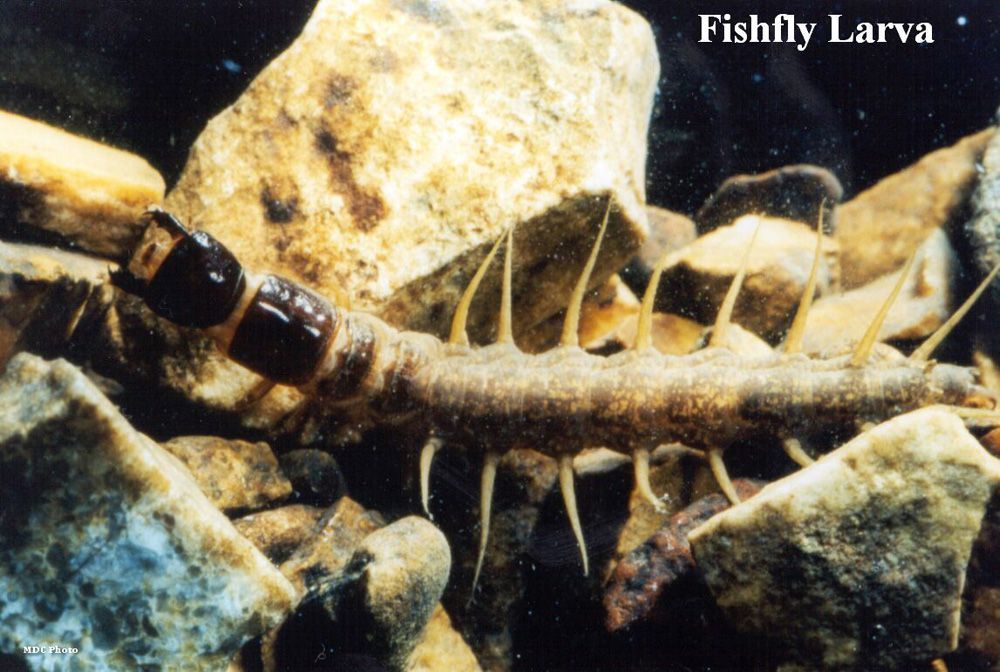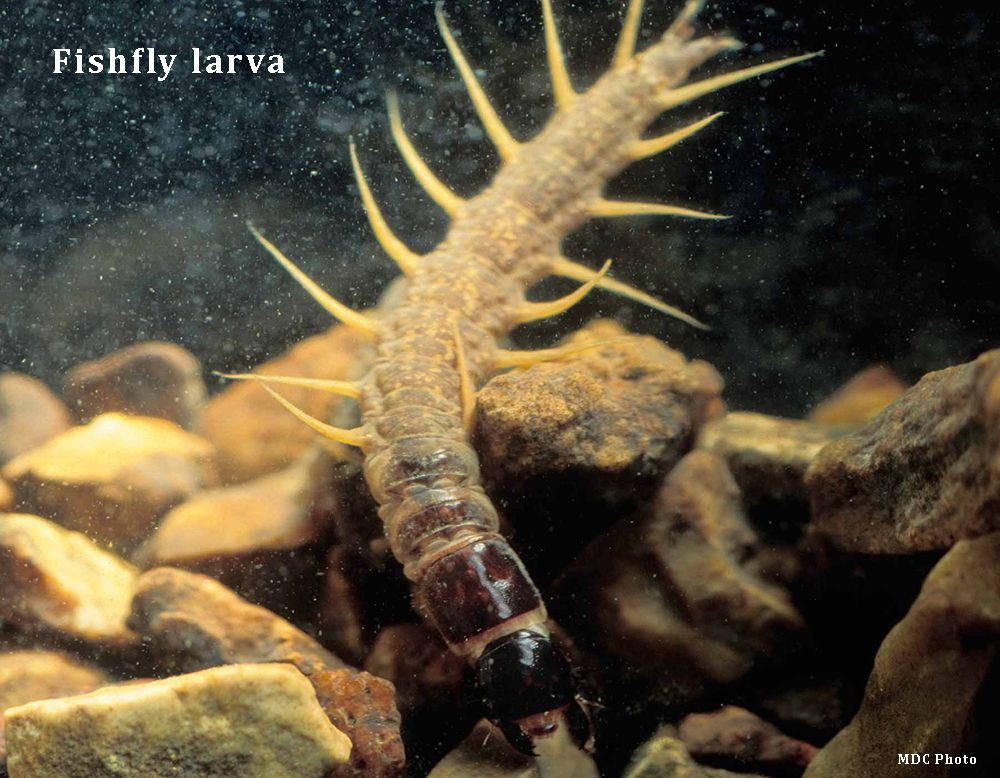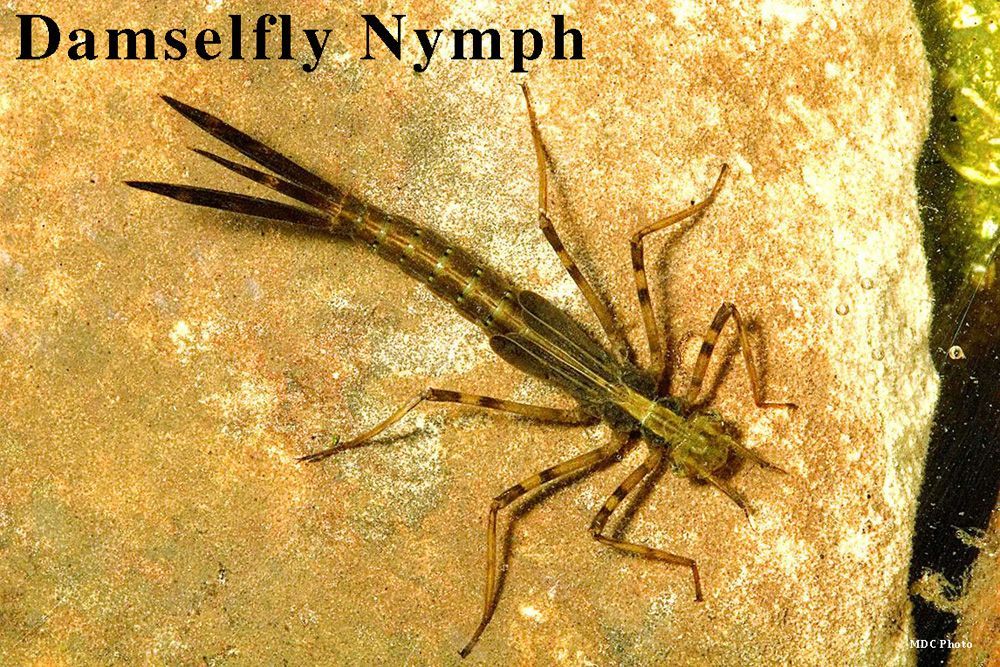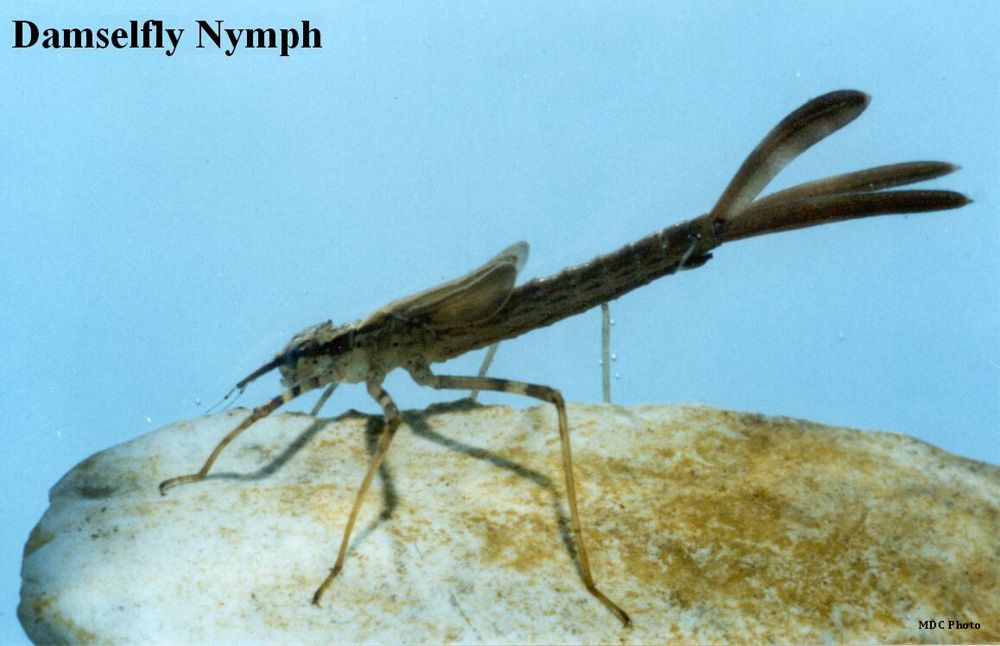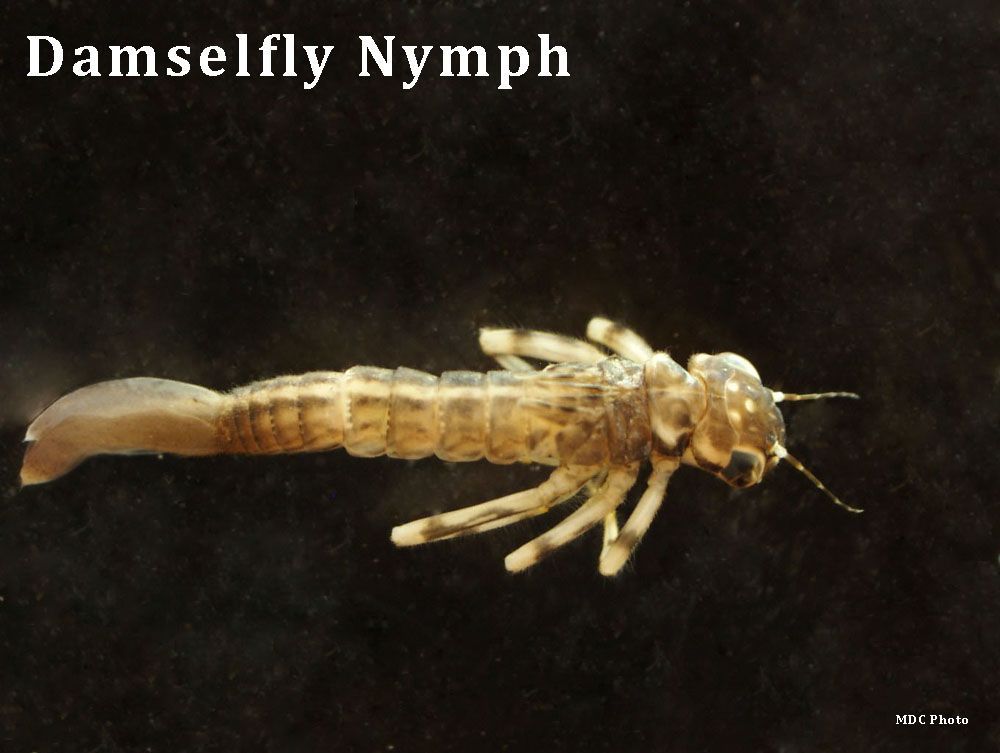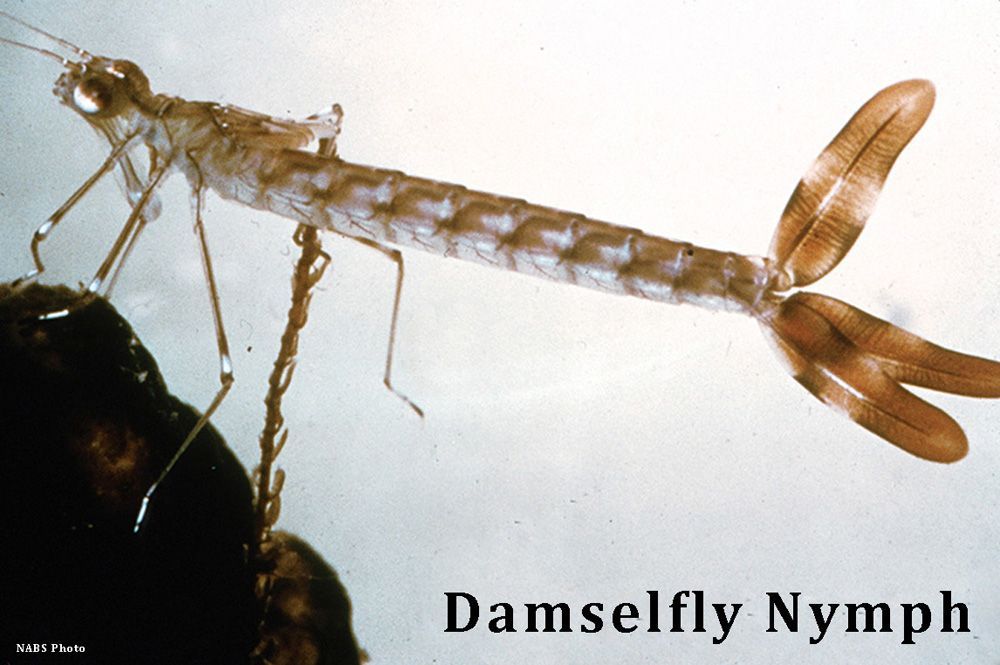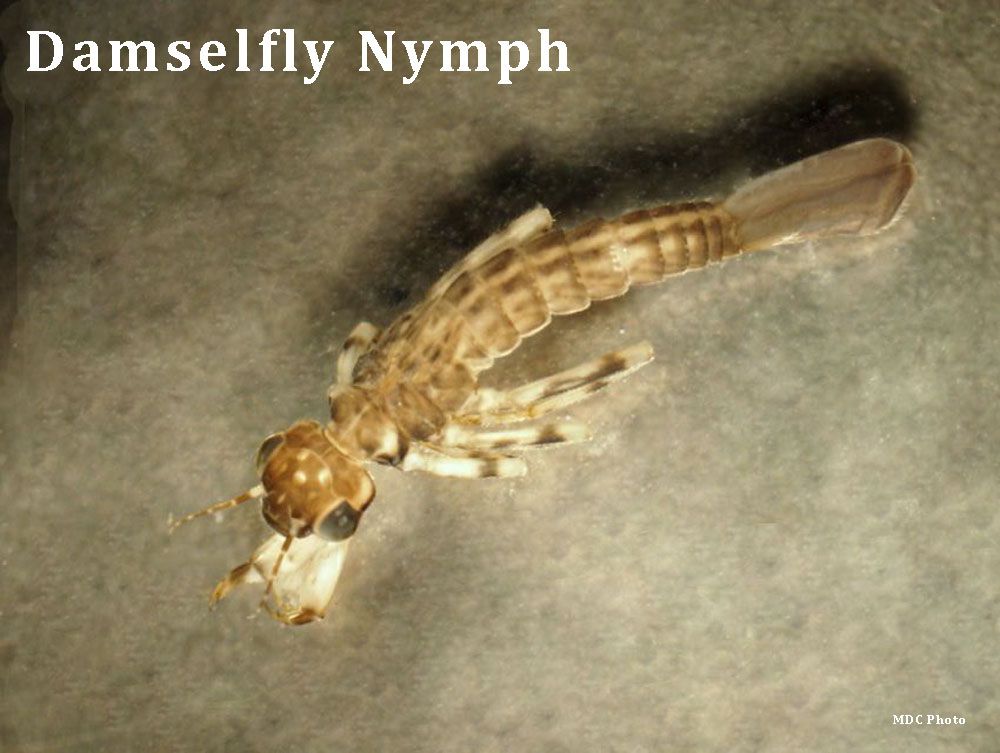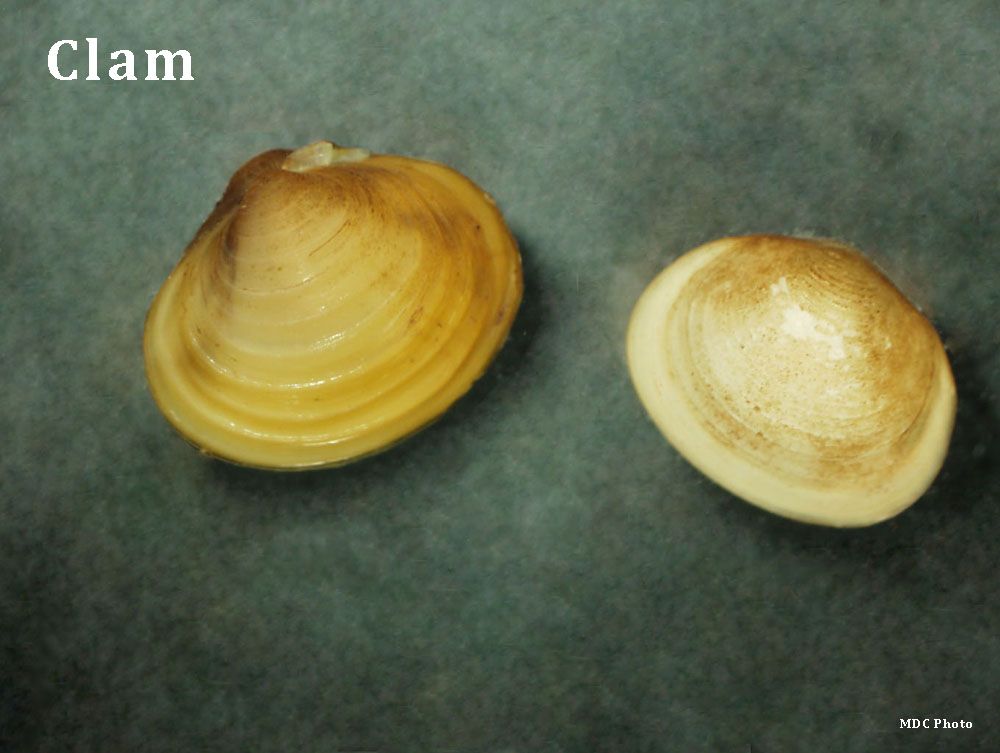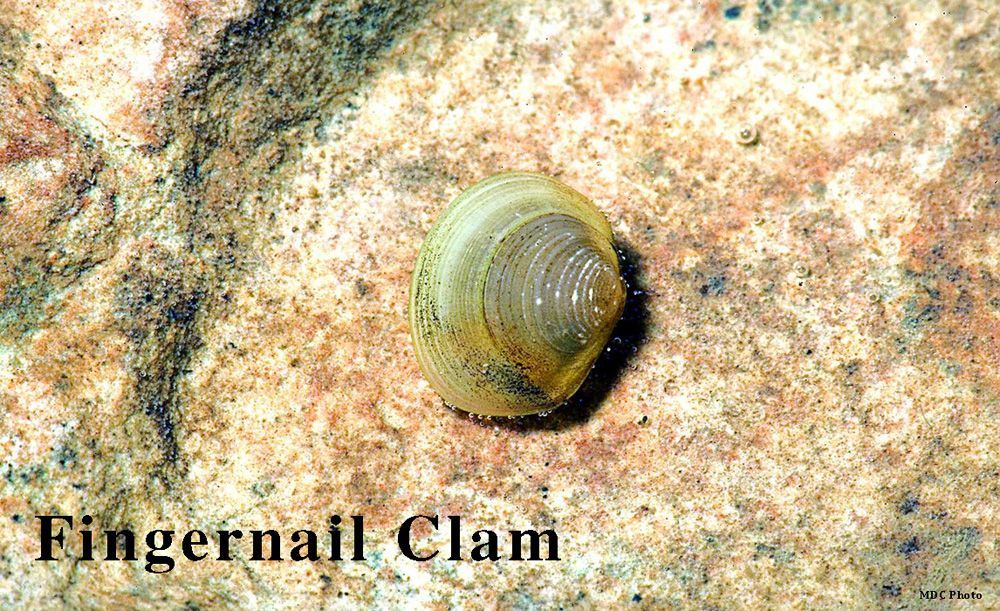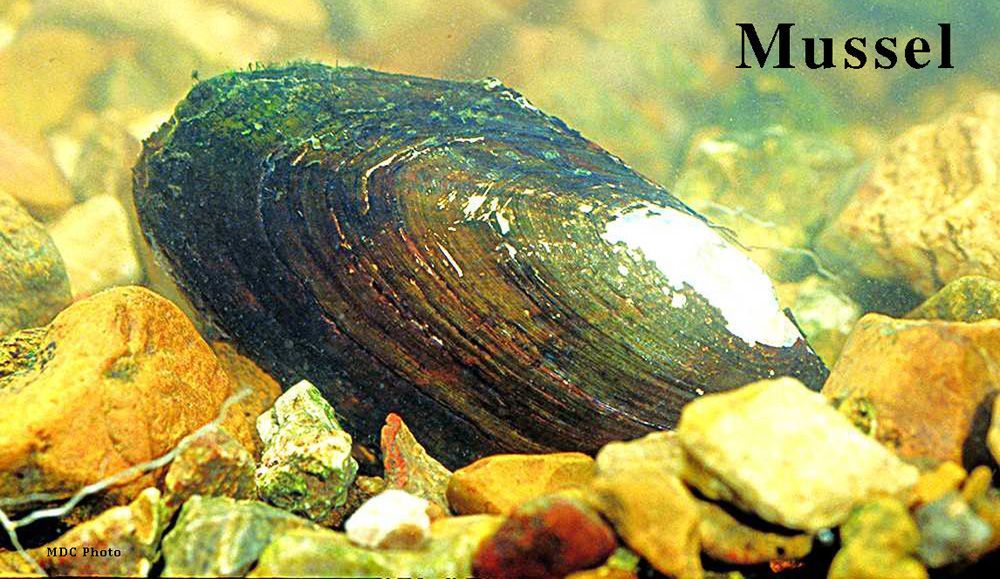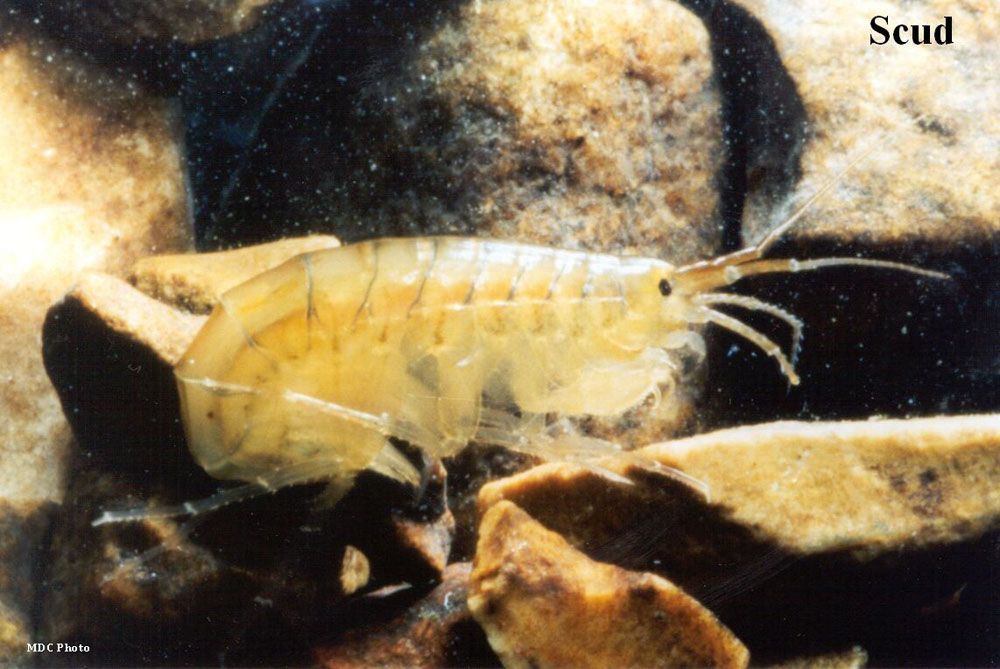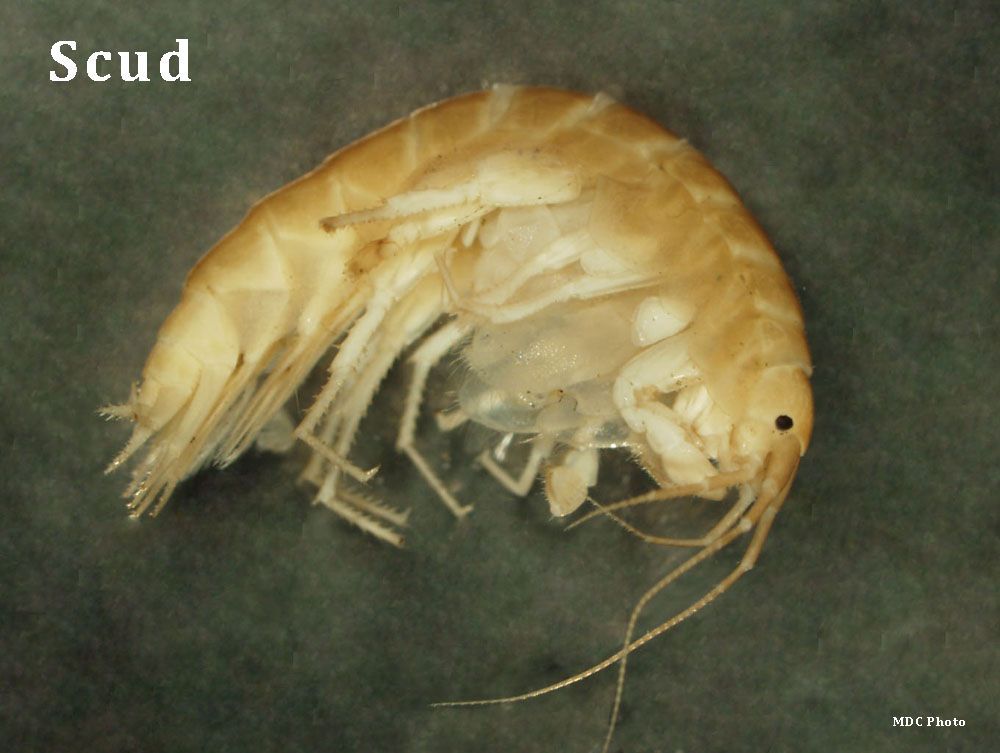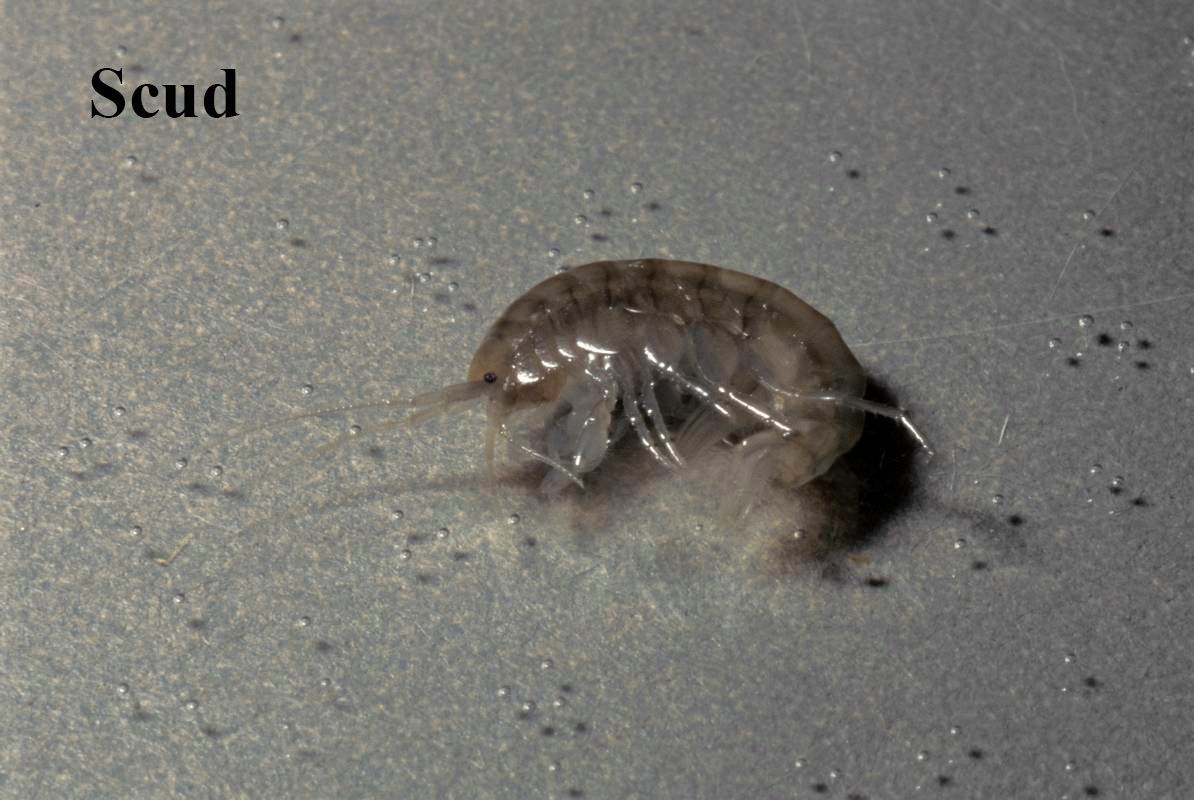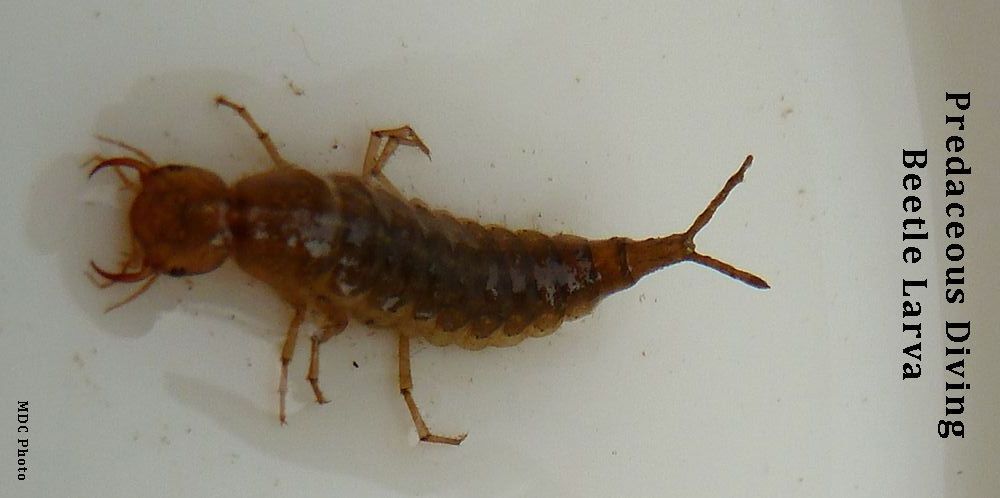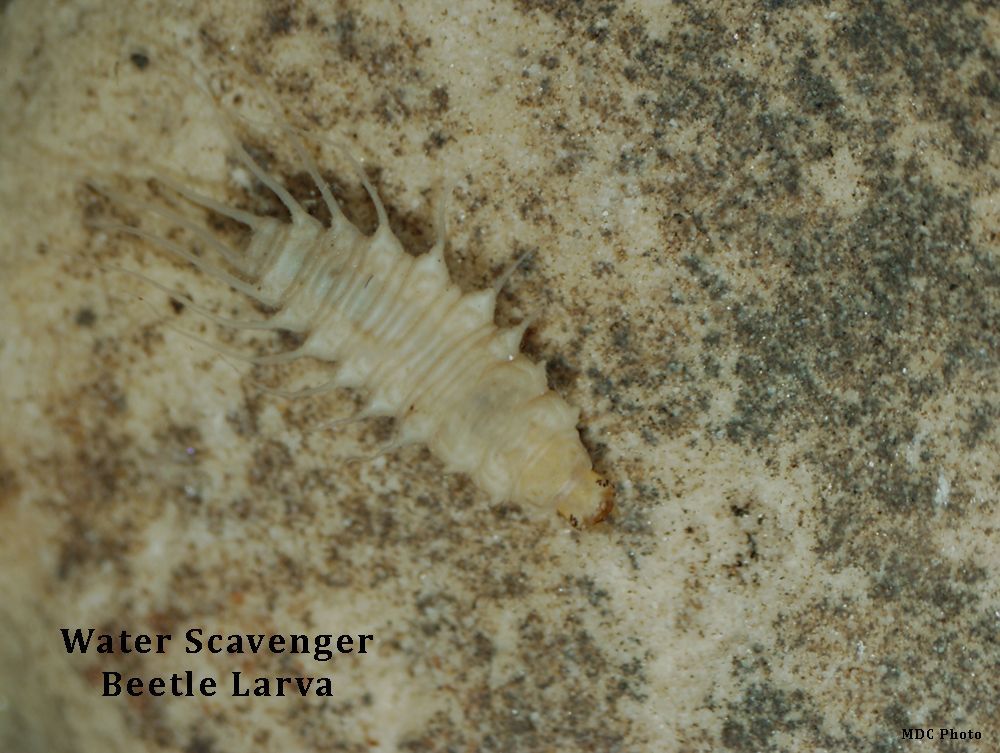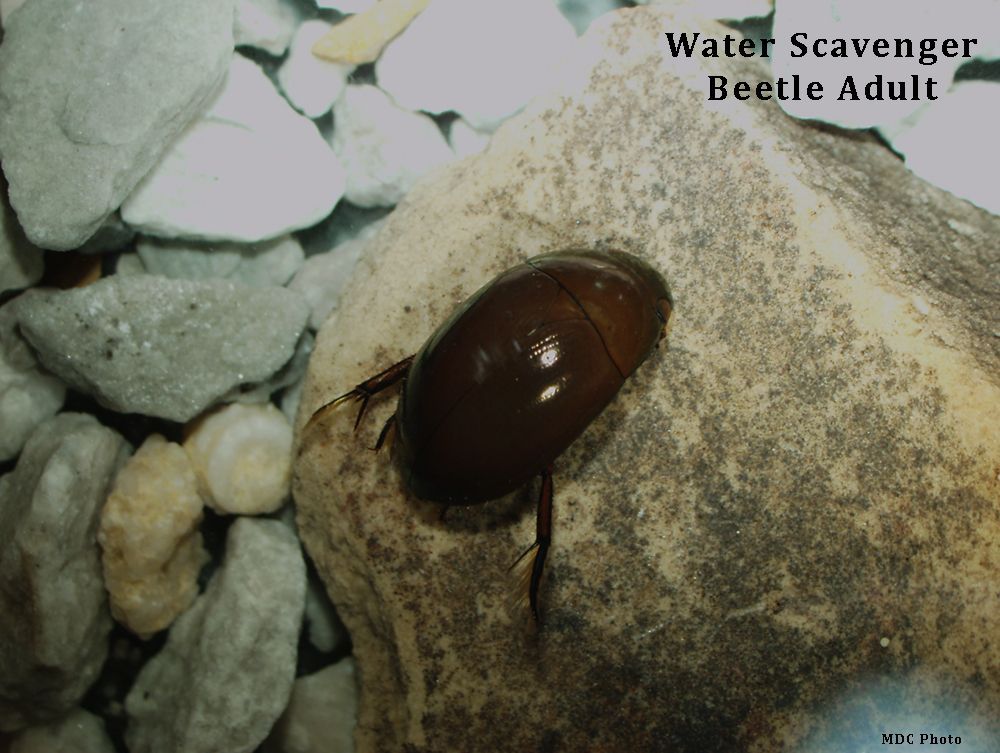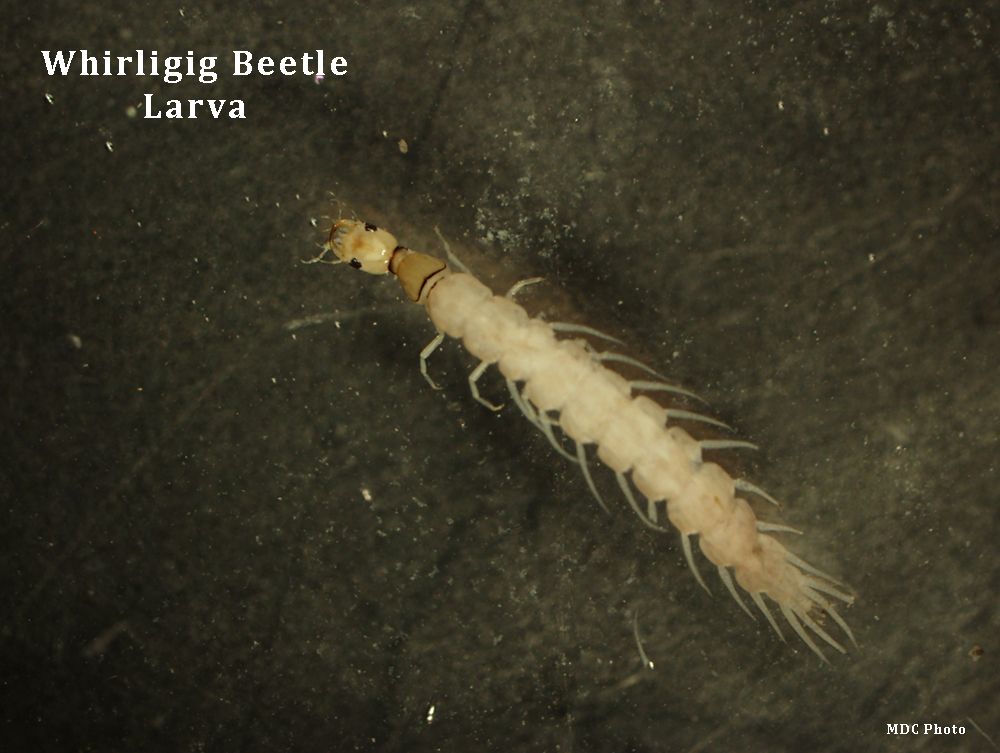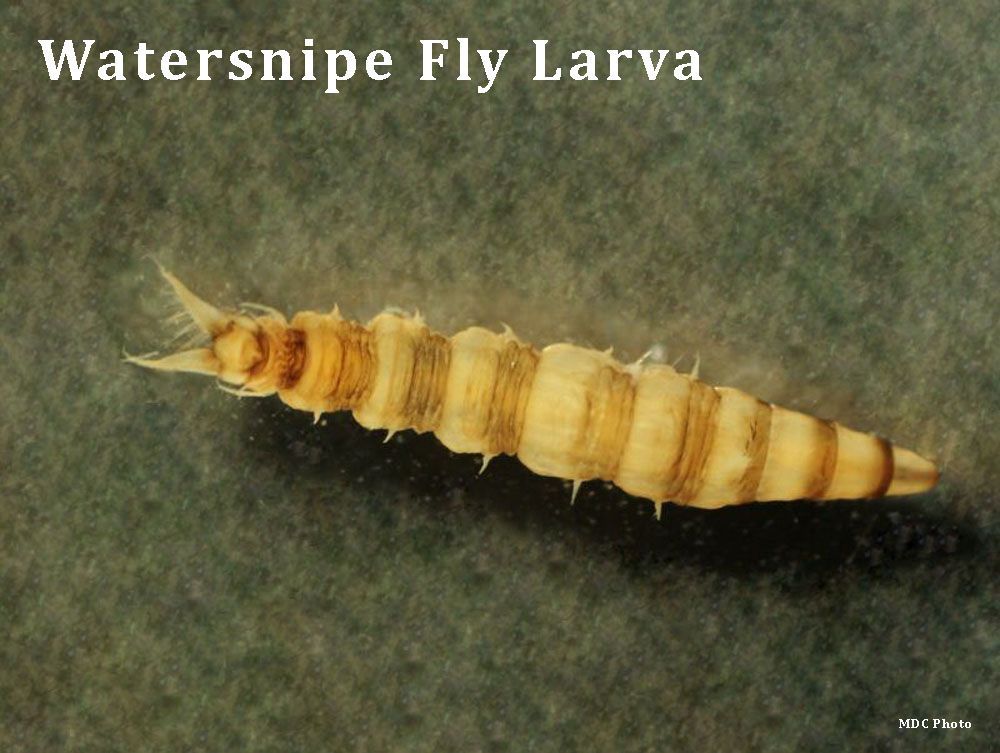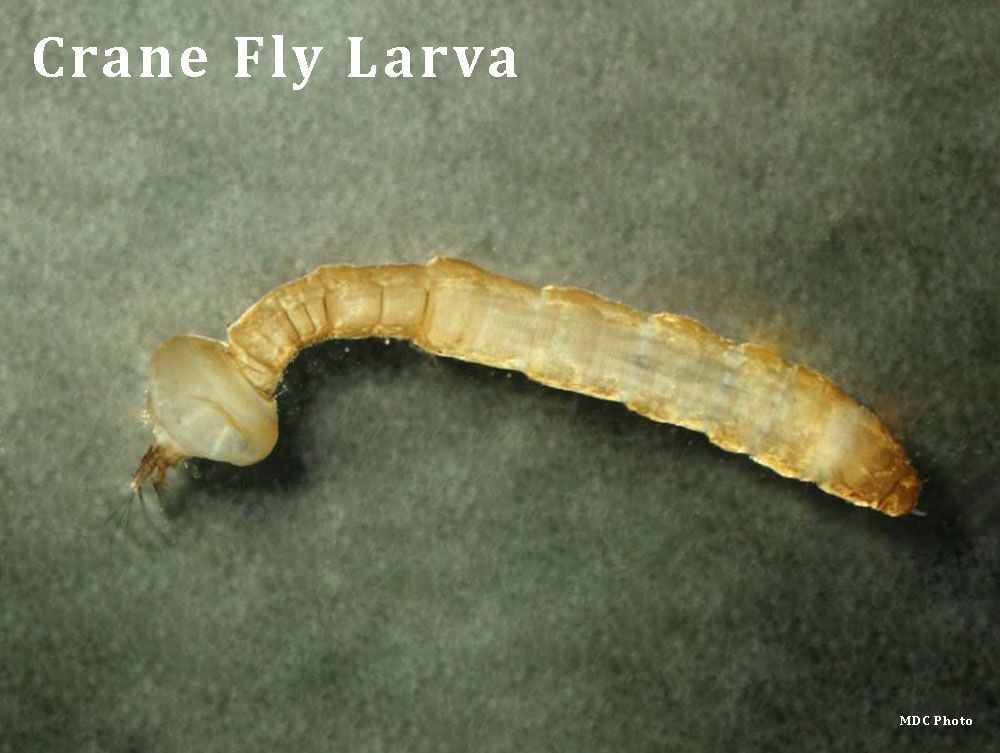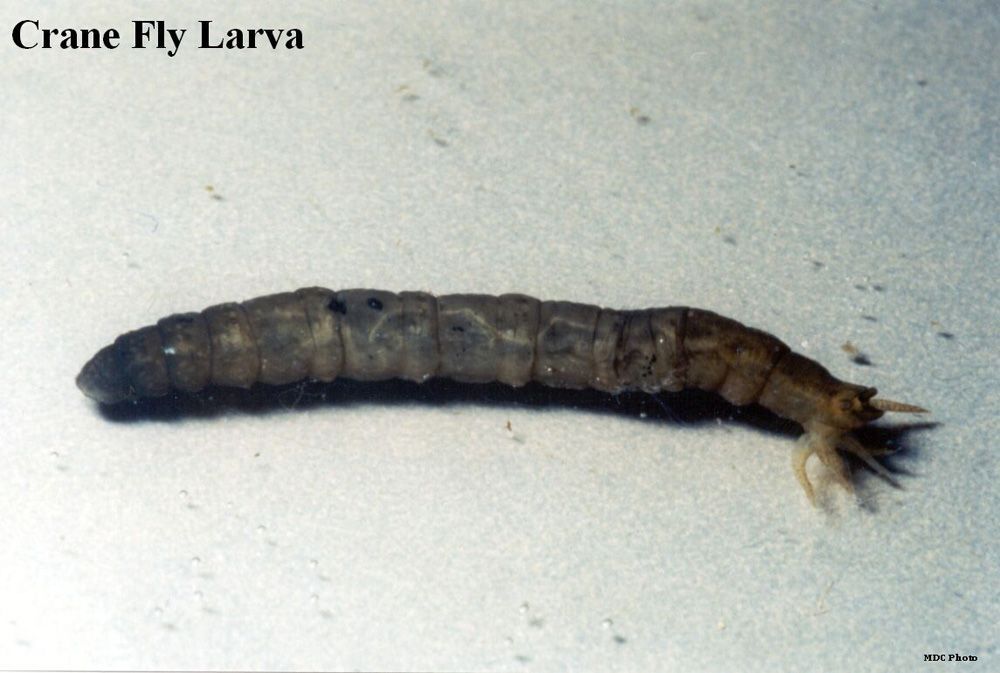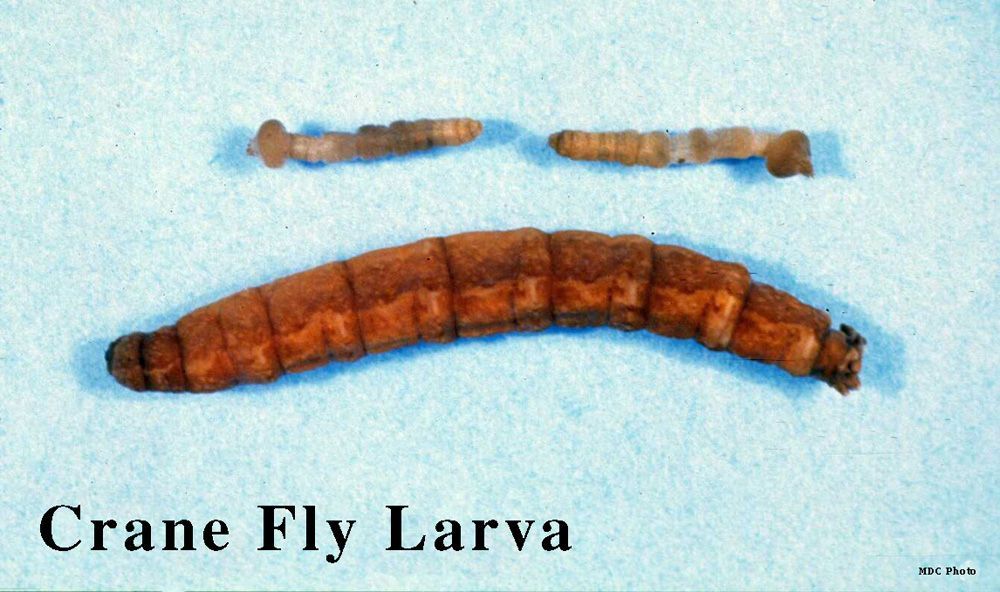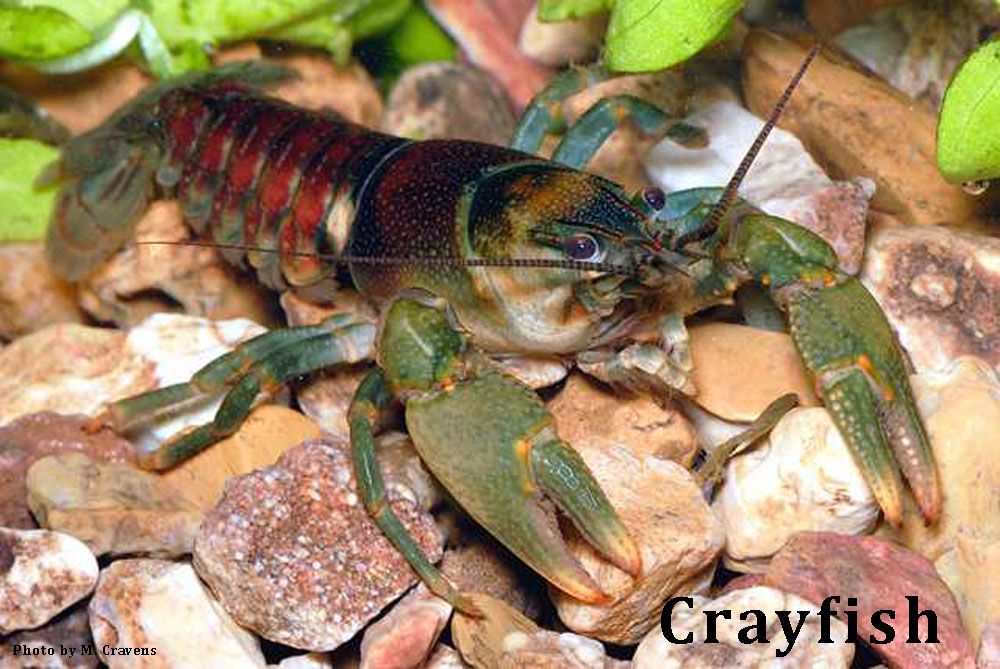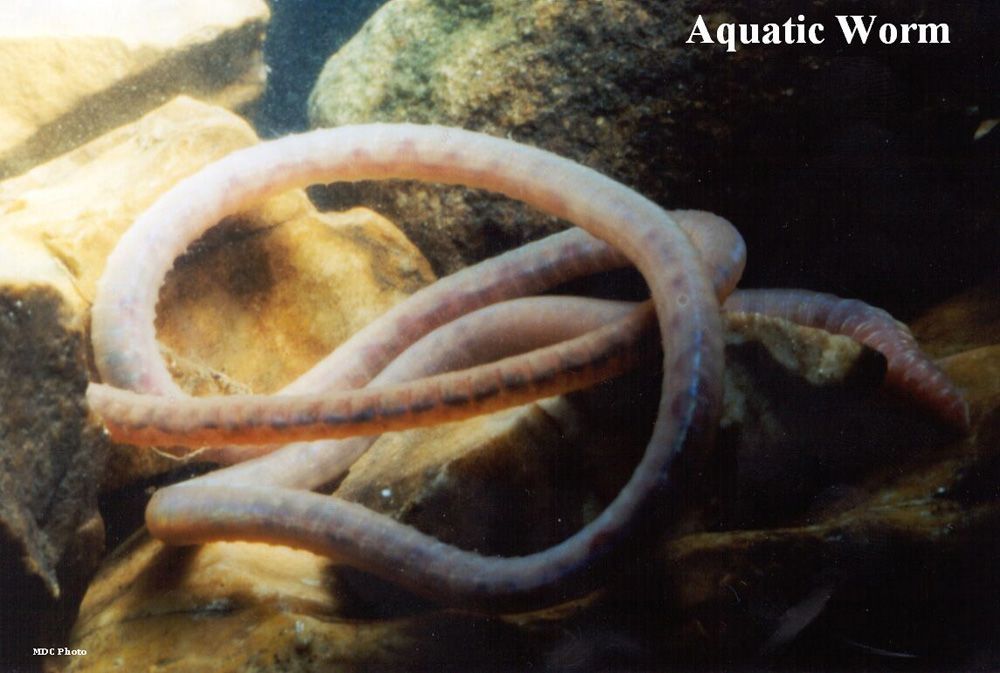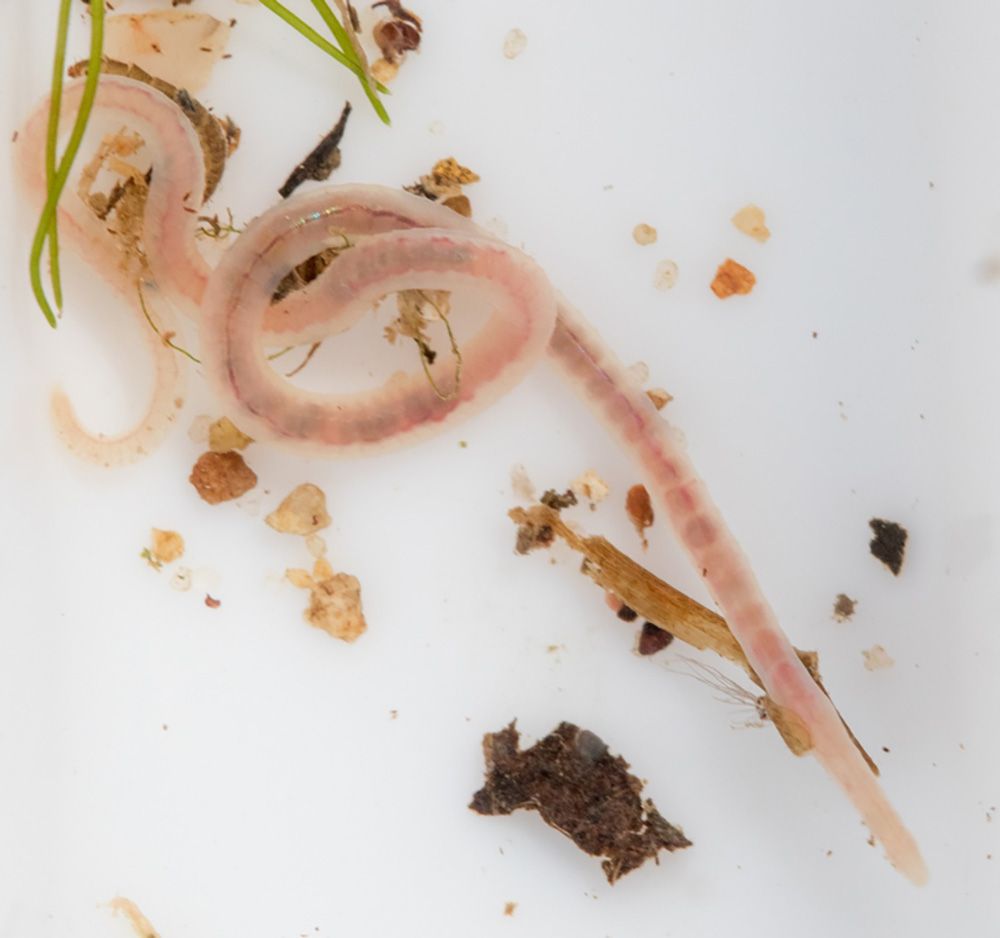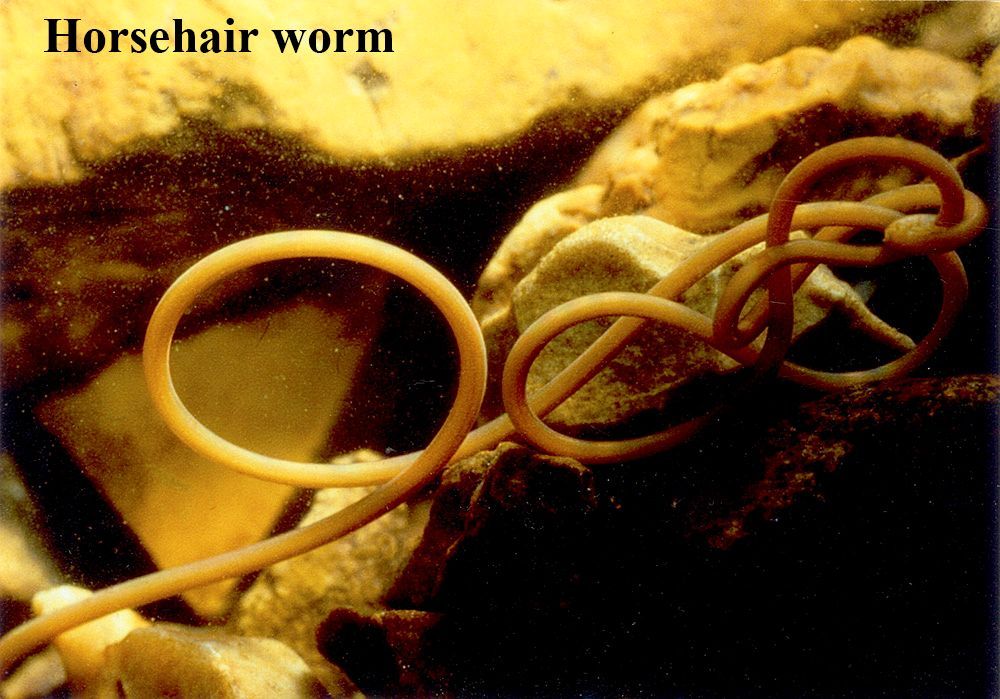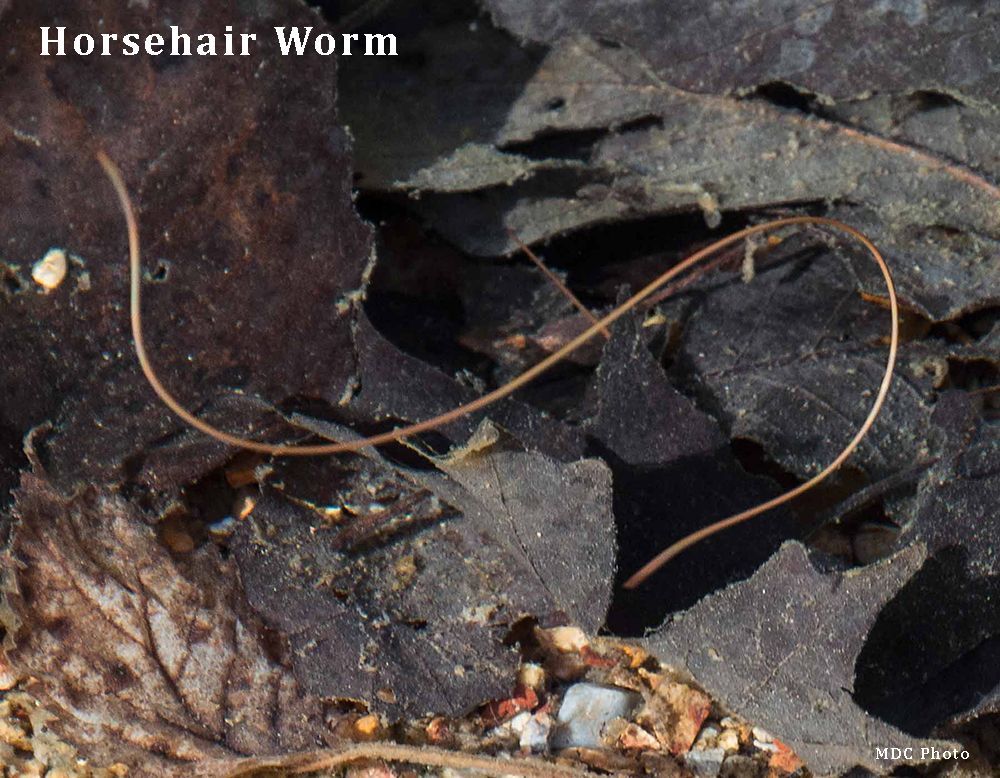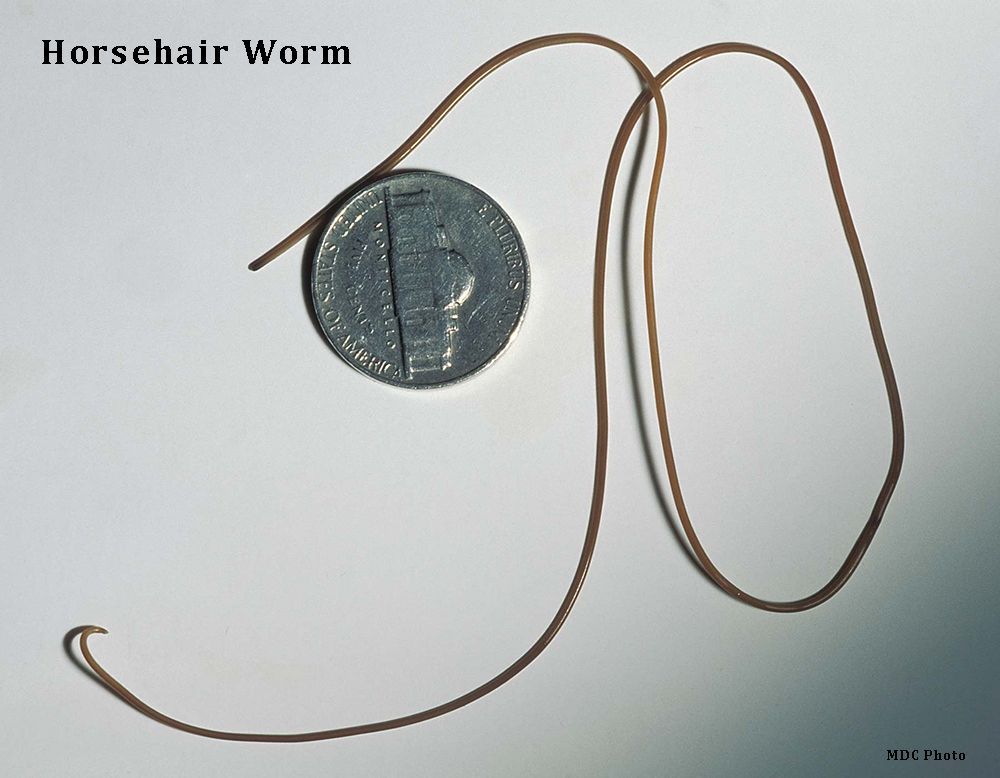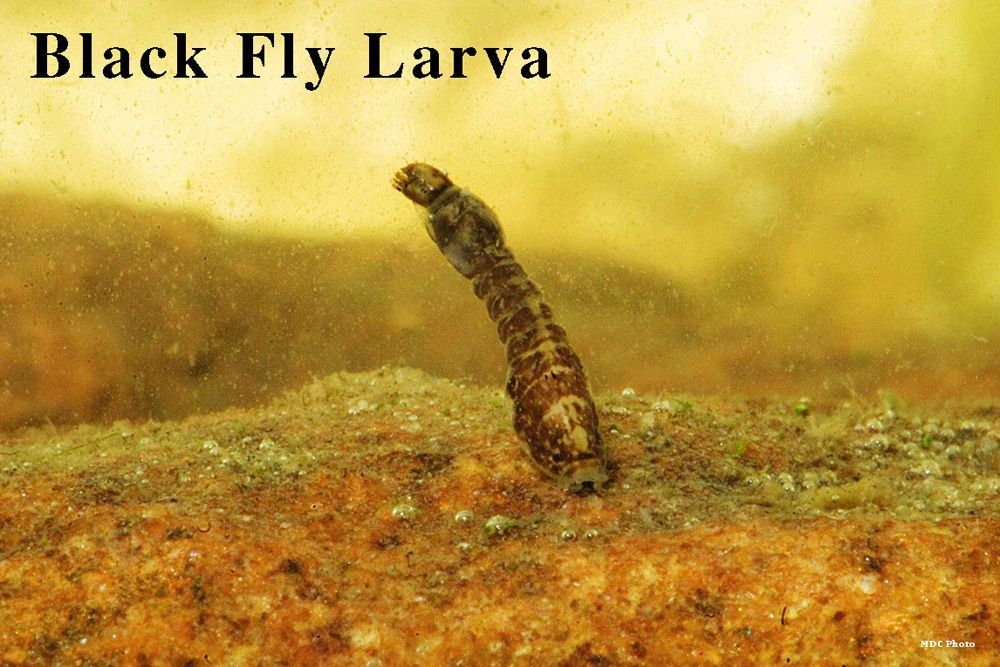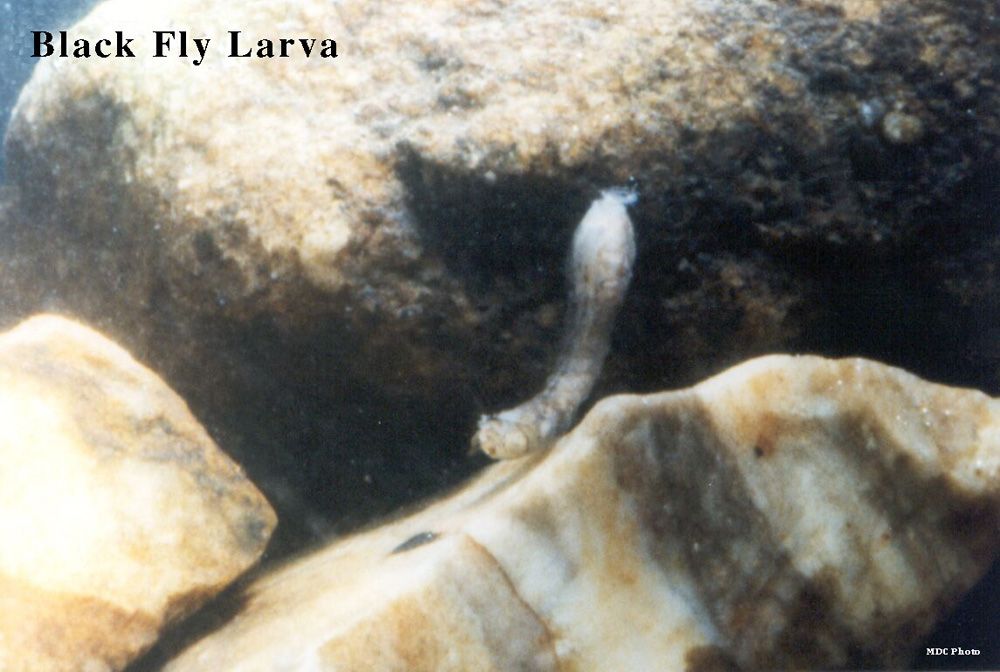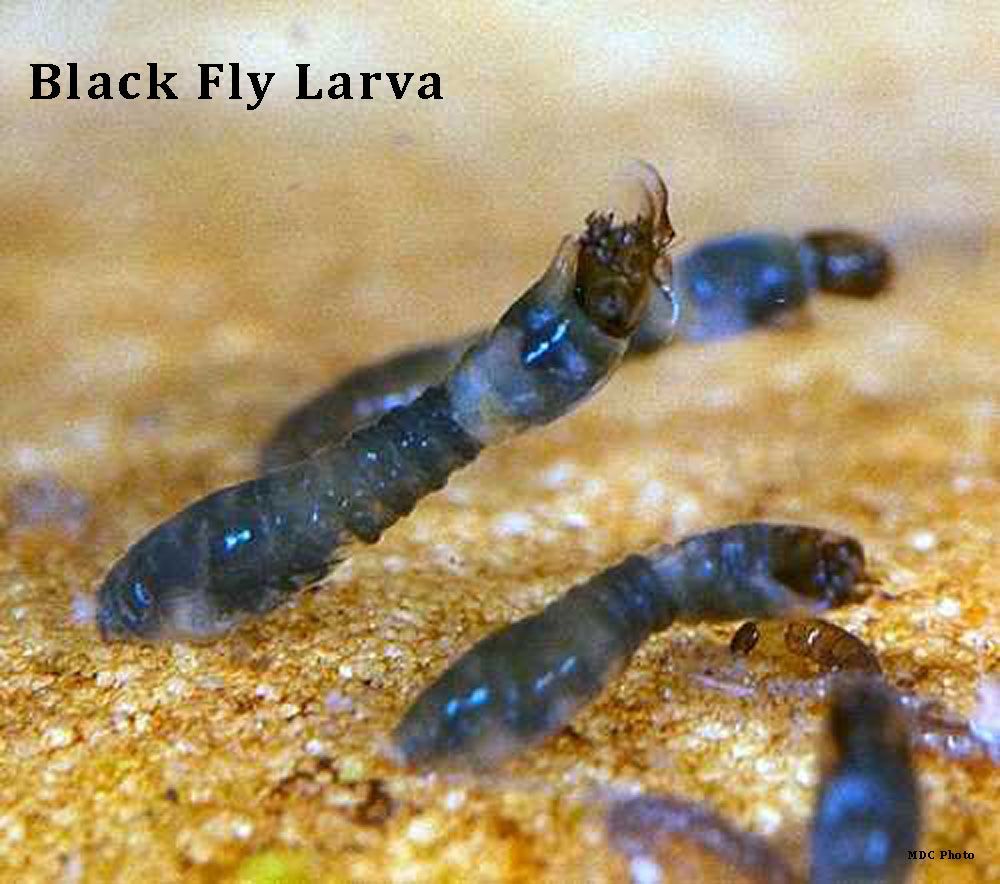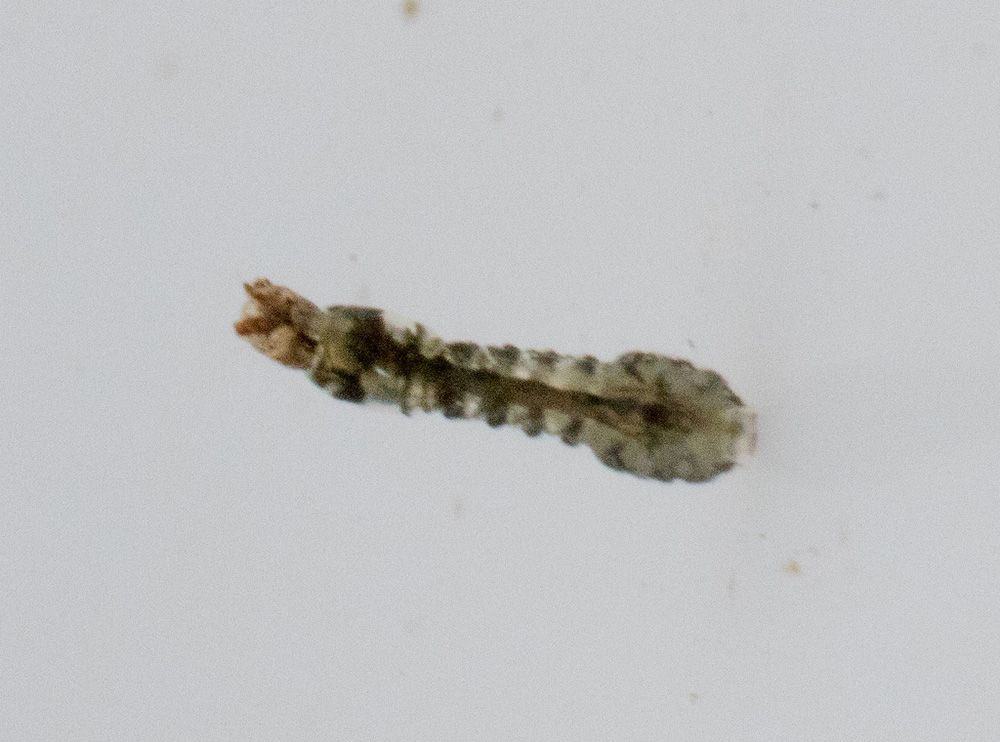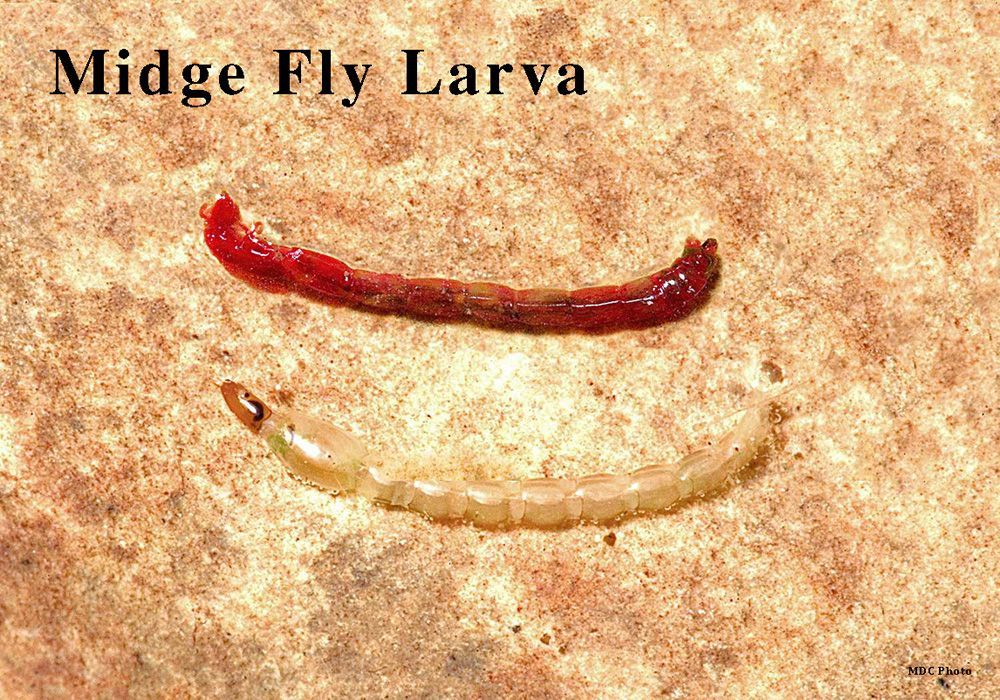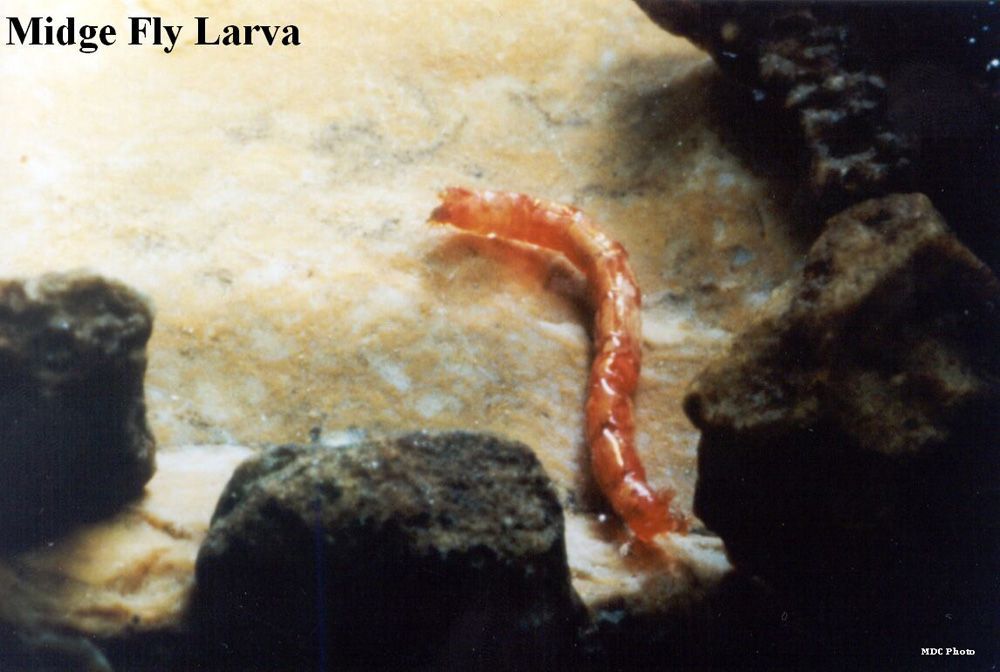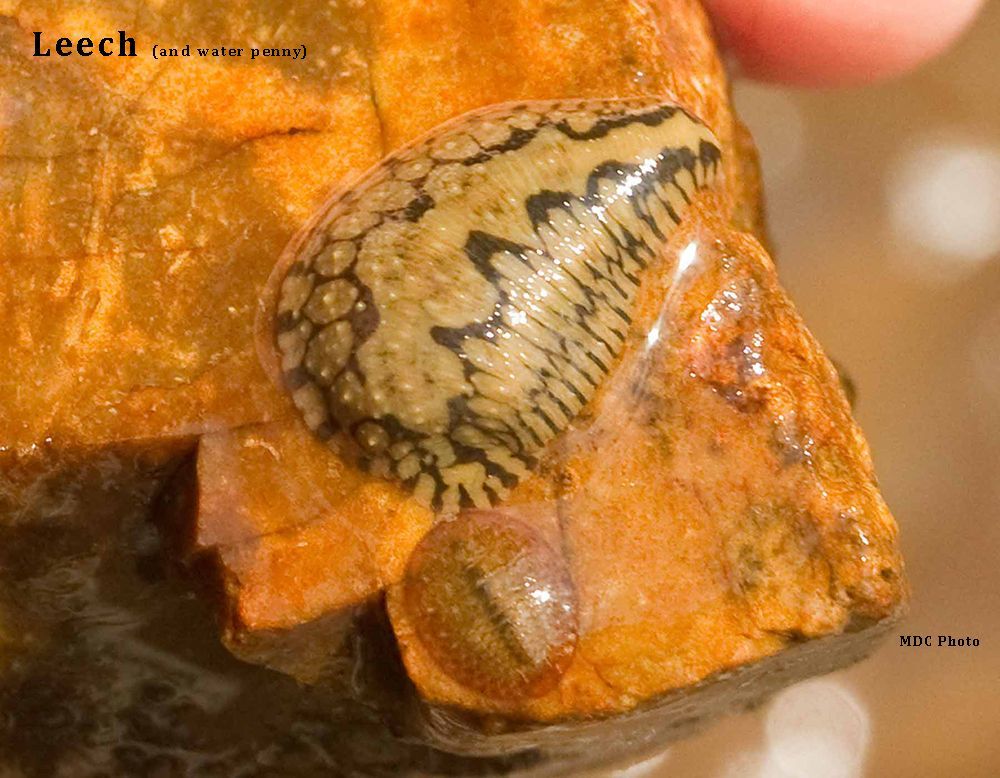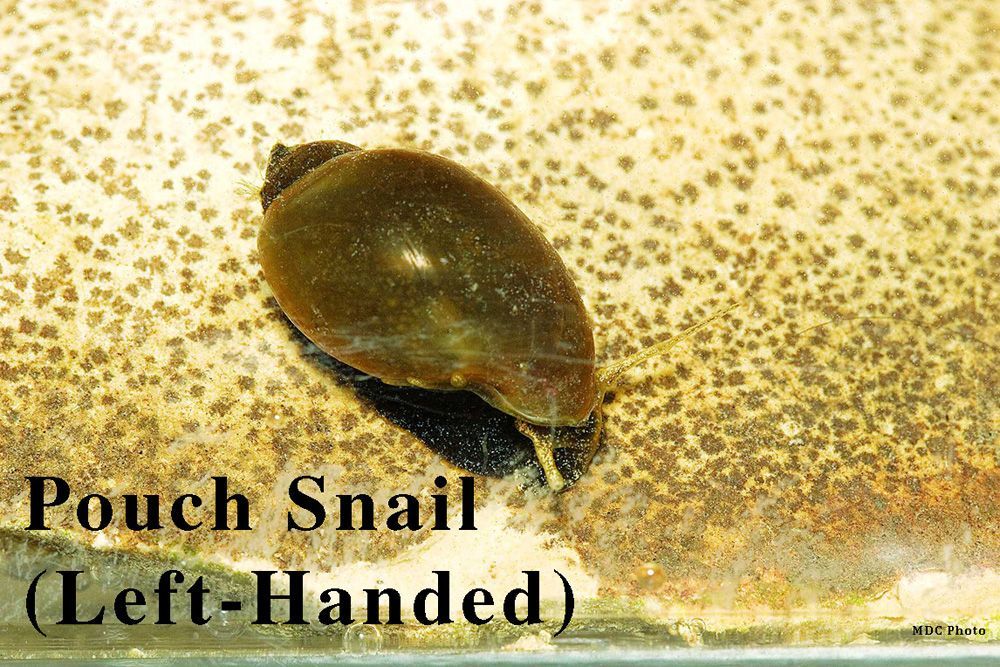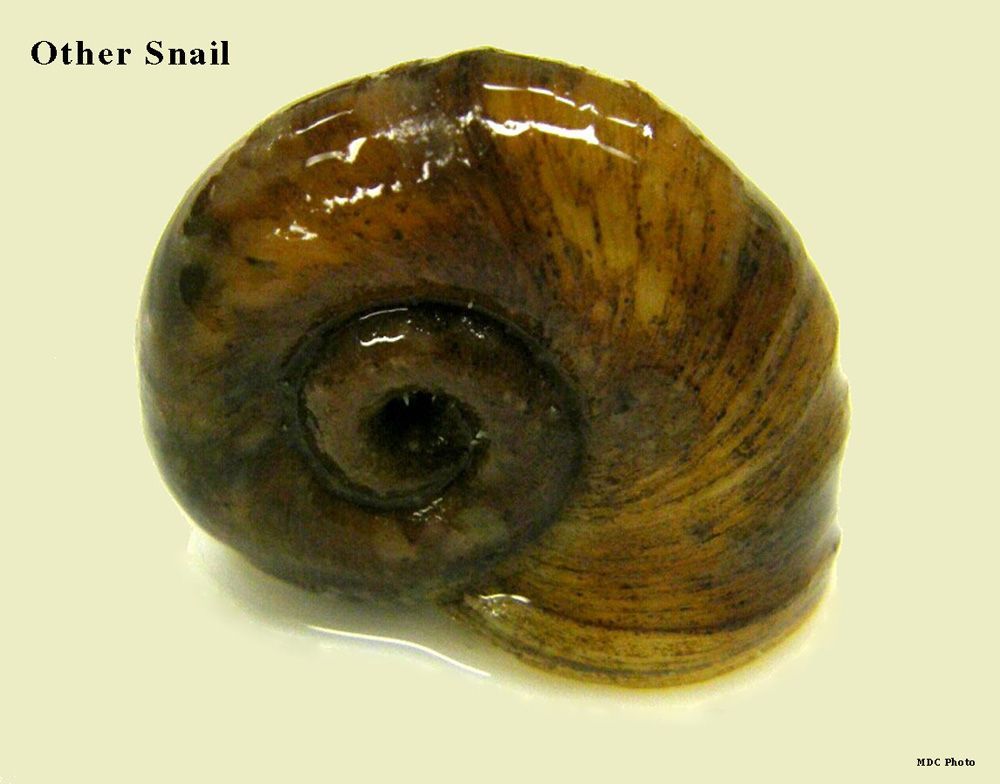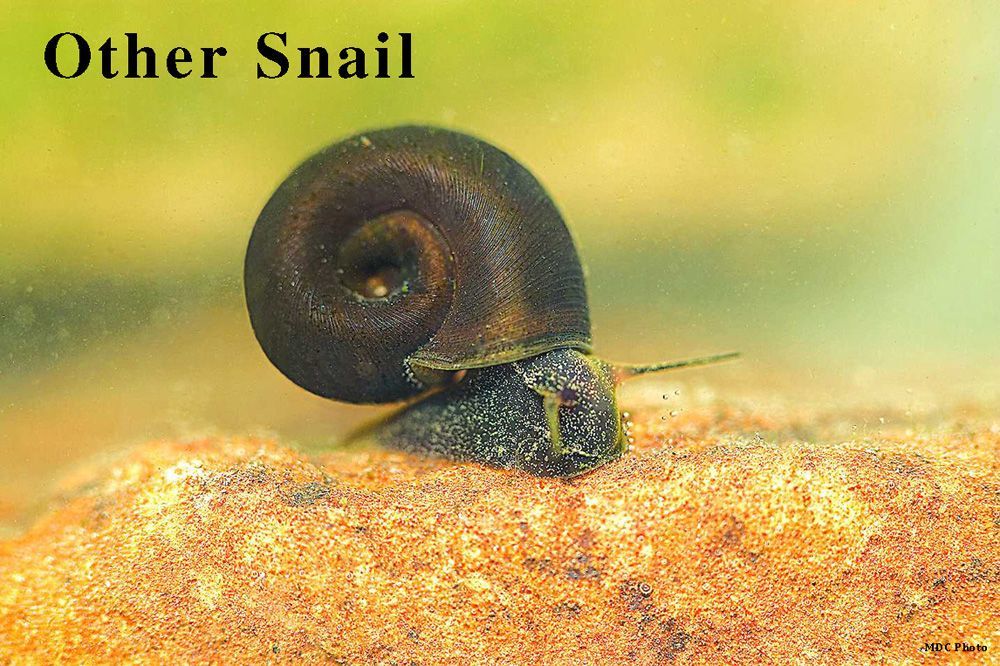Macroinvertebrates in our streams
macroinvertebrates
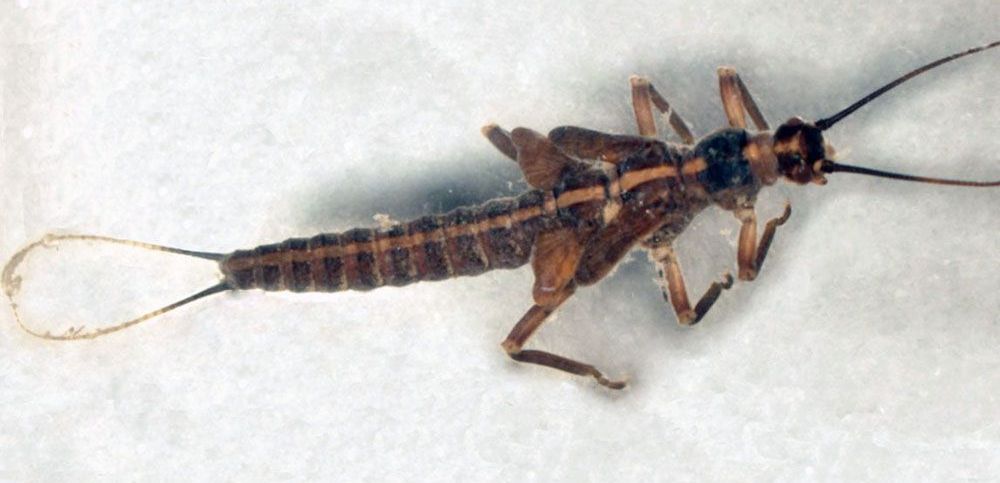

What are benthic macroinvertebrates?
Benthic macroinvertebrates are easily visible organisms lacking skeletons that inhabit the bottoms of streams. The term "benthic" refers to "bottom dwelling," while "macro" indicates that they are "large enough to be seen with the naked eye" or with minimal assistance. "Invertebrate" signifies that they are "without a backbone."
Select any image below to enlarge.
Stonefly
Stonefly nymphs lack abdominal gills and may possess hairlike gills located beneath the legs on the thorax (often referred to as hairy armpits), along with two tails.
Caddisfly Larva
Caddisfly larvae possess elongated bodies that are narrower than their length, featuring a distinct head and one to three hardened plates on the thorax. The abdomen terminates with two terminal hooks and, in contrast to the thorax, lacks hardened outer plates.
Mayfly
Mayfly nymphs possess feathery or platelike gills on their abdomen, their legs culminate in a single hook, and they typically have three tails.
Riffle Beetle (Larva and Adult)
Adult riffle beetles are small six-legged insects that move leisurely along the substrate. The larvae of riffle beetles may exhibit a solid brown hue or possess stripes due to the presence of tough plates encasing their bodies, and they feature six segmented legs attached to their thorax.
Water Penny Larva
Water Penny larvae are flat and copper-hued, resembling a penny; they take the form of a small, upside-down saucer, with segmented, sturdy plates that shield their head and legs from view.
Gilled Snail
Gilled snails possess shell openings that are oriented to the right when the spiral is positioned upwards, with the aperture facing upwards as well.
Dobsonfly larva (Hellgrammite)
Dobsonfly larvae, commonly known as Hellgrammites, can grow up to 4 inches in length. They feature hairlike gills situated beneath their abdominal lateral filaments, giving them an appearance reminiscent of dirty cotton, and they possess large mandibles.
Dragonfly Nymph
Dragonfly nymphs feature a broad, oval to round abdomen that is frequently flattened and resembles a leaf; they possess large eyes and a masklike lower lip.
Sowbug
Sowbugs typically exhibit a gray coloration; possess oblong bodies that are broader than they are tall; feature seven pairs of legs; possess long antennae; and resemble a roly-poly bug.
Alderfly Larva
Alderfly larvae resemble hellgrammites, featuring lateral filaments without visible gill tufts and a single, long, hairlike tail at the end of the abdomen. This tail takes on the shape of the capital letter "A" at its base.
Fishfly Larva
Fishfly larvae resemble diminutive hellgrammites, usually appearing in a lighter shade of reddish-tan adorned with yellowish streaks. They possess lateral filaments on their abdomens, yet lack gill tufts beneath.
Damselfly Nymph
Damselfly nymphs possess prominent eyes, six slender, hooked legs, and three wide, oar-like tails (gills). They adopt a tripod posture to effectively utilize their gills.
Clam/Mussel
A two-piece (bivalve) shell consists of two opposing valves joined by a hinge, with sizes ranging from 1/16 inch to 10 inches. Exclude empty shells from your count, and always return live organisms swiftly to the stream with the umbo or hinge facing upward.
Scud
Scuds range in color from white to gray, possess a body that is taller than it is wide, and feature more than six legs. They move sideways and bear a resemblance to small shrimp.
Other Beetle Larva
Other beetle larvae represent a diverse array of forms. They possess distinct mouthparts and six legs.
Watersnipe Fly Larva
Watersnipe fly larvae possess a slender, tapered body, numerous caterpillar-like legs, a conical head, and two feathery 'horns' located at the end of their abdomen.
Crane Fly Larva
Crane Fly larvae possess a robust, segmented body reminiscent of a caterpillar. At the end of the abdomen, they may exhibit a swollen, turnip-shaped lobe or fleshy, fingerlike appendages.
Crayfish
Crayfish possess two prominent claws and eight legs for walking. They bear a resemblance to small lobsters.
Acquatic Worm/Horsehair Worm
Aquatic earthworms are long, slender, segmented beings that often curl back on themselves. They closely resemble their terrestrial relatives. Conversely, horsehair worms are unsegmented and have a rounded or cylindrical form.
Black Fly Larva
Black fly larvae feature a broad, "fat" base with a suction pad at one end and two fan-shaped structures on their head.
Midge Fly Larva
Midge fly larvae possess a distinct head, a segmented body resembling a worm, and a pair of small prolegs located beneath the head and close to the tip of the abdomen.
Leech
Leeches possess flattened, muscular bodies equipped with suction pads at both ends.
Pouch Snail
Pouch snails lack an operculum that would cover the opening of their shell. When they are upright and facing you, they typically open to the left.
Other Snail
Other snails lack an operculum that covers the shell opening, breathe air, and their shells coil in a single plane (flat).

